
Educated
by
Tara Westover
Published 20 Feb 2018
” * While everyone agrees that there were many years in which my parents did not have a phone, there is considerable disagreement in the family about which years they were. I’ve asked my brothers, aunts, uncles and cousins, but I have not been able to definitively establish a timeline, and have therefore relied on my own memories. My mother, Faye, was a mailman’s daughter. She grew up in town, in a yellow house with a white picket fence lined with purple irises. Her mother was a seamstress, the best in the valley some said, so as a young woman Faye wore beautiful clothes, all perfectly tailored, from velvet jackets and polyester trousers to woolen pantsuits and gabardine dresses. She attended church and participated in school and community activities.
…
When she met and married my grandfather—a good-natured young man just out of the navy—she dedicated herself to constructing the perfect family, or at least the appearance of it. This would, she believed, shield her daughters from the social contempt that had so wounded her. One result of this was the white picket fence and the closet of handmade clothes. Another was that her eldest daughter married a severe young man with jet-black hair and an appetite for unconventionality. That is to say, my mother responded willfully to the respectability heaped upon her. Grandma wanted to give her daughter the gift she herself had never had, the gift of coming from a good family.
…
Grandma wanted to give her daughter the gift she herself had never had, the gift of coming from a good family. But Faye didn’t want it. My mother was not a social revolutionary—even at the peak of her rebellion she preserved her Mormon faith, with its devotion to marriage and motherhood—but the social upheavals of the 1970s did seem to have at least one effect on her: she didn’t want the white picket fence and gabardine dresses. My mother told me dozens of stories of her childhood, of Grandma fretting about her oldest daughter’s social standing, about whether her piqué dress was the proper cut, or her velvet slacks the correct shade of blue. These stories nearly always ended with my father swooping in and trading out the velvet for blue jeans.

American Kingpin: The Epic Hunt for the Criminal Mastermind Behind the Silk Road
by
Nick Bilton
Published 15 Mar 2017
After the bubble had popped a few years earlier, companies that had been built on a wing and a prayer had siphoned people’s retirements into thin air and collapsed, leaving San Francisco a metaphorical no-fly zone. What about going east? Wasn’t there opportunity on Wall Street for someone as clever as Ross? No way. The banks were collapsing from the housing market crash. And he certainly couldn’t settle down and live happily ever after with his girlfriend; his dream of marriage and a white picket fence had been bulldozed by several other men. That left graduate school, or jumping off a cliff. He imagined reality TV fame and a pile of money as a slight detour on the way to some larger accomplishment. Ross was sure he had a grander purpose in life, though he wasn’t sure exactly what it would be.
…
As if they were repeatedly reading from the same script, a verbal brawl would ensue, and then one of them would storm out of the apartment or into another room. A few hours later, love would magnetically draw them back together. They would make up and fall asleep in each other’s arms, Julia dreaming of a white picket fence and a couple of giggling children running around in the yard, Ross’s reveries of the Silk Road growing so large that one day he would overturn the drug laws and be lauded for the positive impact he had had on society. The next morning the pugnacious lovers would start all over again. The site had also started to affect other areas of their relationship.
…
Soon afterward a Spanish woman stopped by Julia’s studio to pick up some books, then explained why she was really there. “Jesus told me I need to pray for you.” Julia wept. Her life goals were not that far-fetched. Julia hadn’t wanted to change the world; she had just wanted her world to be changed. Was it so difficult to find a good man to marry, who would give her a child or two, a white picket fence, and, most important, see that those children grew up differently from how she had? There was a dream in her mind where that good man was Ross Ulbricht, and it ended with them both living happily ever after. Sadly, that fairy tale had never materialized. After the Spanish woman who knew Jesus arrived at her studio, the kind lady invited Julia to church.

Dignity: Seeking Respect in Back Row America
by
Chris Arnade
Published 3 Jun 2019
If I spent a day driving around getting someone into detox, I would find them in Hunts Point the next day, having run away or been kicked out. If I showed up to collect someone to make sure they appeared for court, I often ended up hearing nothing but excuses, if I could find them at all. After two years of this, nobody close to me got out or succeeded. Nobody got clean or sober or ended up in a “little home with a white picket fence.” The only way anyone seemed to leave the streets was being sentenced to an upstate prison, or thrown in Rikers, or mandated to rehab, or killed. * * * • • • In the middle of 2015, I stopped going regularly to Hunts Point. I was drinking too much. While I could understand my friends’ drug use as forged from trauma, mine was simply about selfishness.
…
Jobs are not the only thing that Portsmouth has lost over the last few decades. Those jobs were the backbone of the community. People could walk straight from their graduation onto the factory floor and build a life around it. They would get a chunk of money every two weeks, get health care and pensions, which gave them the stability to get the home with the white picket fence and build a family. Without stable jobs to build a family around, Portsmouth began to fall apart. This happened in other back row towns, too. Whole communities started to fall apart, leaving a void in the center of town. It was the other losses, the ones that followed the job losses—the crumbling town centers, the broken families, the isolation, the pain, the desperation, the drugs, the humiliation and anger—that we in the front row didn’t fully see or understand.
…
Over the following years she kept falling in love and kept being disappointed. All of her boyfriends did drugs, and all, like her, were homeless. They all also pimped her and some beat her, but that didn’t stop her; she kept hoping and dreaming that eventually one would work out. Beauty wanted nothing more than to be in love. She wanted her version of the white picket fence, the only version she really knew, the only version that she felt was available to her. “Heavy and I are tight. He used to be just my friend, and now it’s all intimate and he wants to get married. That shit is tempting. I mean, he got disability. I don’t know if I should marry Heavy. I mean, he has been good to me.
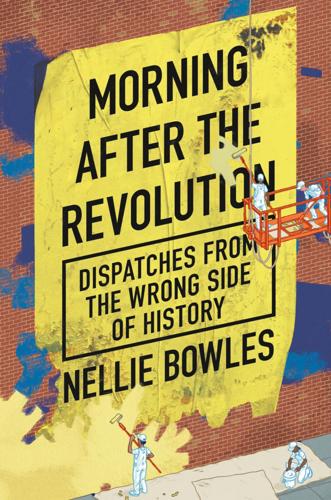
Morning After the Revolution: Dispatches From the Wrong Side of History
by
Nellie Bowles
Published 13 May 2024
Gay rights were largely won by making homosexuality seem apolitical—born this way was the mantra. Gays were just like you. A lot of gay men had to put on ill-fitting khakis and stand for photos by white picket fences before gay marriage could go from absurd to the law of the land. But that is not what the new members want. For the new members, being in the community means, more than anything else, that they hate those white picket fences. There is a sense that to be queer is mystical and maybe holy. The Long Now Foundation, a group that puts together events to encourage future-thinking and whose efforts are in part funded by Jeff Bezos, held an event in 2021 called, “Queering the Future: How LGBTQ Foresight Can Benefit All.”
…
I was feeling pretty down on all this when my wonderful synagogue announced that the toddler service next week—the Tot Shabbat, it’s called—would be a drag show. I was feeling, honestly, a little crazed about it all—these doctors are neutering little gay kids was my tone at dinner parties. Everyone is erasing women was something I would try to bring up in really inappropriate settings. The organizations that got me my white-picket-fence life that I love and the safety to raise a family were run by people arguing children can consent to cross-sex hormones. For a straight person, this can all be an oddity. For a gay person, this is a crisis. But the radicalism of the movement was hardening me. And now here was our great synagogue, and the toddlers, and the upcoming drag queen.

Simplify
by
Joshua Becker
Published 6 Nov 2011
My wife and I had decided to spend our three-day holiday weekend cleaning the house from top to bottom. After all, that’s what families do. And we are, by definition, just your standard, run-of- the-mill, middle-class family of four living in the suburbs. My wife and I are in our early-thirties. My son is 7, my daughter, 3. We are everything typical (minus the dog and white picket fence). It all started harmlessly enough that Saturday morning as my son and I began to clean the garage. The neighbors also happened to be outside planting gardens, watering flowers, and tending to the outside of their two-level home. Nearly four hours later, we were still working on the same garage and our neighbors were still working on their home.
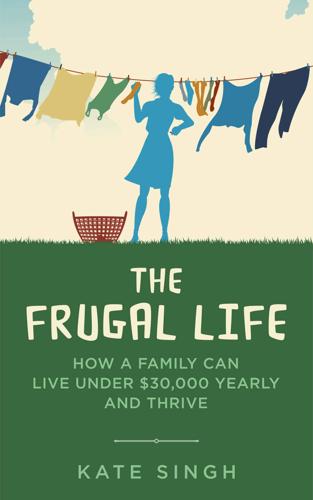
The Frugal Life: How a Family Can Live Under $30,000 and Thrive
by
Kate Singh
Published 31 May 2019
It's a beautiful spring day in April as I sit in my overstuffed, red leather recliner (hand-me-down) by the window. I see our lovely yellow roses and the last of the camellias in hot pink and rich reds. Our house is a 1941 stucco cottage painted in vibrant blue (almost too vibrant but the lush gardens surrounding it make it just right). I have my roses and white picket fence in the front yard and a huge kitchen garden in the backyard along with fruit and nut trees. The inside of the home is charming and has been described as shabby chic. In every room you will find lush house plants, colorful rugs, overstuffed furniture, and paintings that take you far away to farmlands and villas.
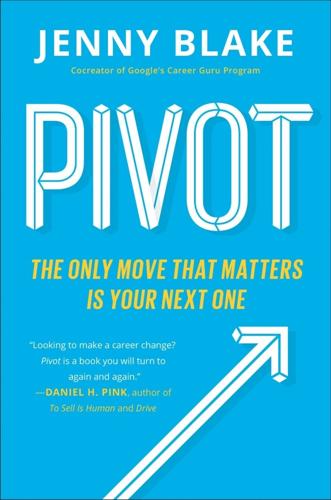
Pivot: The Only Move That Matters Is Your Next One
by
Jenny Blake
Published 14 Jul 2016
You aim to surround yourself with people who challenge you. You don’t want to be the smartest one in the room, at least not most of the time. You look for symbiotic relationships where all parties bring something helpful and unique. You are not afraid to break from the status quo, from society’s “white picket fence” ideal of success. For this reason, you may feel out of place in traditional situations. It takes courage to bust deeply embedded cultural norms. In his 1951 book, The Wisdom of Insecurity, Alan Watts implored readers to accept that there is no such thing as safety or security, and in fact, most of the joys of human life are lovable because they are changing.
…
See also plateau, career Pivot Scales, 194–95 PivotMethod.com, 15, 23, 50, 85, 137, 167, 213, 233 pivots/pivoting business, 7, 15 characteristics of, 9–10 crisis compared with, 9–10 culture for, 217, 219–33 definition of, 7 degree of, 28, 161 duration of, 15 fear of, 8, 17 or getting pivoted, 4–8 mindset for, 16–17 motivation for, 1–3, 4–8 plateaus versus, 24 risk in, 9 Plant stage aim/purpose of, 14, 35, 89, 107 finances and, 75–85 guiding principles and, 39–52 overview of, 13, 14, 35–37 project-based purpose in, 69–70, 124–25 and strengths, 35–37, 61–62, 65–73, 107, 118 values and, 35, 39–45, 52, 66 and vision, 35, 53–63, 66 plateau, career, 24, 190–91, 222, 226, 235, 236 platform, 93, 120, 125–29, 163–64, 178 progress milestones, 174, 178–79 project-based purpose, 69–70, 124–25 Project Management Triangle, 183–84 quantity/quality issues, 145, 150, 183, 228 Rapple, Rebecca, 97 Rasmussen, Christina, 10 Rath, Tom, 35–36 reciprocal transformation, 105 Redecker, Cliff, 231 redundancy, 153–55, 164 Reese, Nick, 77, 78 regret, 172, 198–99, 207, 210, 211 rejection, 130, 181–82, 195, 200 reputation of best managers, 224 capital, 92 and discoverability, 123, 125, 127, 130 and duration of pivot, 15 networking and, 94 and strengths, 71, 72–73 results, 72 Ries, Eric, 7, 143, 148 risk and courageous life, 238 and duration of pivot, 15 and failure, 173, 180 and finances, 76, 78, 81 incremental, 164–65 and Pivot Scales, 194–95 in pivots, 9, 17 and redundancy, 153–55 riskometer for, 27–29, 194 tolerance for, 25–27 Riskometer, 27–29, 194 Roberts, Christian, 147 Rock, Chris, 111 Rosenberg, Jonathan, 219 routines: importance of, 49 Ruiz, don Miguel, 142 runway, 78, 79, 157, 174 Sadie (client), 205–6 Sam (friend), 92 Saramago, José, 1 savings, 79–80 Scaife, John, 21, 22, 210–11 Scan stage aim/purpose of, 14, 89–90, 115 and discoverability, 89–90, 123–37 frustration during, 136–37 and networking, 89, 91–105, 115, 132, 133–35 overview of, 13, 14, 89–90 and skills/expertise, 107–21 scarcity, 83–84 Schmidt, Eric, 77, 219 Schoenberger, Amy, 2, 5, 130 Schrotberger, Luke, 101 Seinfeld, Jerry, 161–62 Seneca, Lucius, 91 “servant leader” perspective, 115 shadowing, 95–96 Shafir, Eldar, 83 Shen, Jason, 67, 221–22 shoot-the-moon, 208–09 short-term trade-offs, 183 side hustles, 80–82, 148, 152, 165, 175, 176 Silver, Nate, 129 Sims, Stacy, 126 skills/expertise building new, 82, 107–21 closing the gap in, 108–21 hobbies and, 110–11 marketable, 71–72, 146 technology and, 107, 119–20 transitional, 132 See also strengths “sliding-doors” careers, 59–60 Slim, Pamela, 144 slow build (incremental) pilots, 152–53 Snow, Brooke, 62–63 Soosalu, Grant, 193 sphere of influence, 93 stagnation zone, 27–28, 194 strengths aim/purpose of, 69–70 and career conversations, 228 and characteristics of strong pilot, 146–48 and finances, 82 leveraging existing 7, 8, 14, 29–30, 61–62, 65–73, 89, 112, 119, 128–29 and marketable skills, 71–72 mining failure for, 201–2 reputation and, 71, 72–73 and results, 72 and timing of pivots, 17 and work-history highlights, 70–73 See also skills/expertise stretch zone, 27–28, 55, 158, 163, 180, 194, 197 structured annual career conversations, 227–29 success Career Karma and, 104–5 defining, 58–59 mindset and, 23 rejection as stepping stone to, 200 “white picket fence” ideal of, 118–19 Sullivan, Stacy, 152 sweet spots, 23, 26–27, 68, 69 Taleb, Nassim Nicholas, 25, 149 talent, 20, 23, 67–70, 71, 147, 161, 223–24, 232. See also strengths technology, 4, 107, 119–20 “then what” questions, 112–13 thinking fear as consuming, 113 linear, 111–13, 176 stagnant, 157–59 strategic, 119–20 thought leadership, 60, 93, 126 Tierney, John, 49 Tom (brother), 95–96, 101, 208–9 travel pilots, 157–59 tyranny of the hows and the whole how, 55–56, 113 Uhrig, Scott, 4 unrealized gains, 186, 187–88, 189–91 Ursillo, Dave, 201–2 values aim/purpose of, 39–40, 53 career conversations and, 228 clarification of, 39–45 clusters of, 43 ranking of, 44, 45 shifting of, 40 vision and, 53, 57 visual reminder of, 45 Vice, Roxanne, 207–9 vision aim/purpose of, 53–55 clarification of, 60, 62–63 as cloudy, 56–57 importance of, 53–55 and knowns/unknowns, 62–63 and leapfrog approach, 132 one-year statement of, 57, 58–59, 60–62, 66 and purpose, 124 time-range for, 54–55 values and, 53, 57 Waitzkin, Josh, 108 Walker, Alice, 161 warm connections, 92.

The Rent Is Too Damn High: What to Do About It, and Why It Matters More Than You Think
by
Matthew Yglesias
Published 6 Mar 2012
America is, on the whole, a very spacious country, and there will and should always be plenty of room for suburban homes and large lots. Viewed correctly, curbing America’s policies of forced suburbanization is not anti-suburb or contrary to the interests of people with a strong preference for detached houses and white picket fences. Research from Jonathan Levine of the University of Michigan and Lawrence Frank of the University of British Columbia indicates that the American population is split evenly between people with a firm preference for walkable urbanism, people with a firm preference for the suburban lifestyle, and people with mixed feelings.
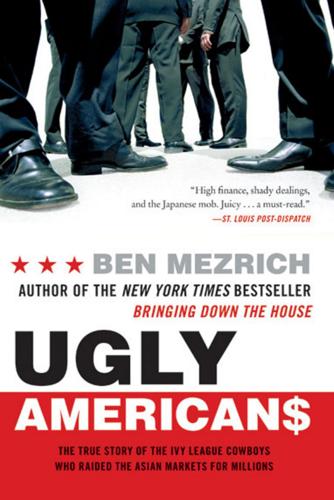
Ugly Americans: The True Story of the Ivy League Cowboys Who Raided the Asian Markets for Millions
by
Ben Mezrich
Published 3 May 2004
In a way, the juxtaposition made Malcolm seem even more like a robber baron. I reminded myself that he had gone to Japan with nothing and fought his way to the top. His tale was rags to riches, a young man’s search for the American dream. Except somewhere along the way, Malcolm’s American dream had shifted from a white picket fence to a multimillion-dollar portfolio and a glass mansion on the shores of Bermuda. 41 85 29 4161 52 513⁄16 515⁄8- 1⁄16 6624 3 3 Thirty Thousand Feet, September 1992 I t was a dangerous combination. Twenty college football players at thirty thousand feet, with free access to seemingly unlimited quantities of alcohol.
…
Was this dream out of reach, or was it different from football, possible, attainable? “You know what they say,” he said, his nervousness replaced by a new ambition, a feeling almost akin to euphoria. “To the vampires go Ugly Americans | 99 the spoils. I like your version of the American dream much better than the white picket fence and the two-car garage.” Carney finished his champagne and began to fill another. “I don’t know about the fence,” he responded, “but did you notice the two Ferraris in the garage downstairs?” Malcolm nodded. Carney grinned at him, raising his glass. “They’re both mine.” 41 85 29 4161 52 513⁄16 5 ⁄8- ⁄16 6624 3 10 Osaka M alcolm’s high school coach used to call it the Flash: the moment when rational thought ended and instinct took over, when the body reacted the way it was born to react.
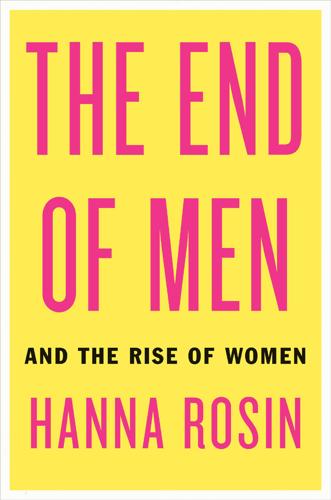
The End of Men: And the Rise of Women
by
Hanna Rosin
Published 31 Aug 2012
That week’s lesson, from a workbook called Quenching the Father Thirst, was supposed to involve writing a letter to a hypothetical estranged fourteen-year-old daughter named Crystal, whose father had left when she was a baby. But El-Scari had his own idea about how to get through to this barely awake, skeptical crew, and letters to Crystal had nothing to do with it. Like some of them, he explained, he grew up watching Bill Cosby living behind his metaphorical “white picket fence”—one man, one woman, and a bunch of happy kids. “Well, that check bounced a long time ago,” he says. “Let’s see,” he continues, reading from a worksheet. What are the four kinds of paternal authority? Moral, emotional, social, and physical. “But you ain’t none of those in that house. All you are is a paycheck, and now you ain’t even that.
…
Over the years, researchers have proposed different theories to explain the erosion of marriage in the lower classes: the rise of welfare, the disappearance of work for men, or in the eyes of conservative critics such as Charles Murray, plain old moral decay. But Edin thinks the most compelling theory is that marriage has disappeared because women are now more economically independent and thus able to set the terms for marriage—and usually they set them too high for the men around them to reach. “I want that white-picket-fence dream,” one woman told Edin, and the men she knew just didn’t measure up, so she had become her own one-woman mother/father/nurturer/provider. Or as Edin’s cowriter, the sociologist Maria Kefalas, puts it, “everyone watches Oprah”—or whatever the current Oprah equivalent is. “Everyone wants a big wedding, a soul mate, a best friend.”

The Gated City (Kindle Single)
by
Ryan Avent
Published 30 Aug 2011
A certain fluidity and flexibility is necessary to keep the economy humming, to defend it against stasis and decline. We would prefer to keep ourselves and our homes safely apart from the messiness of the market. Business is a dynamic, volatile arena, we think, but neighborhoods can and should remain a quiet world apart. As much as we’d like to erect an impermeable white picket fence between our tranquil residential streets and the hum of the economy, we can’t. Our neighborhoods are our economy; they’re the people who live in our cities and make them work. When we try too hard to plan out every detail of a city, to control density and limit change, we’re also micromanaging and constraining the workings of the market.
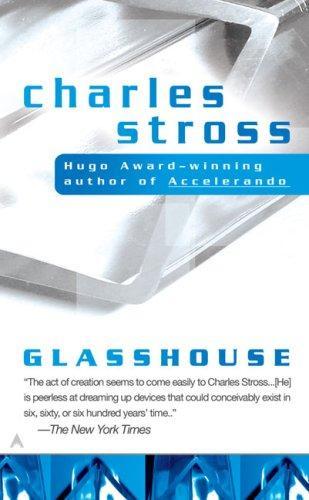
Glasshouse
by
Charles Stross
Published 14 Jun 2006
But he's not around, and I manage to get into the garage and pick up my cordless hammer drill, a bunch of spare bits, and some other handy gadgets I laid aside against a rainy day. I go back to the taxi, and I'm still tightening the belt to hang everything off when it moves away. We cruise up a residential street, low houses set back from the road behind white picket fences, separated by trees. It's hot outside, loud with the background creaking of arthropods. We drive into a tunnel entrance. I take a deep breath. "New orders. Stop right here and wait sixty seconds. Then drive through the tunnel and keep going. Keep your radio turned off. At each road intersection, pick a direction at random and keep driving.
…
And I don't expect Janis would be organizing anything like this if it wasn't important. It's a wonderful day, the sky a deep blue and a warm breeze blowing. Janis is right about one thing—I don't remember ever seeing this neighborhood before. The taxi cruises between rows of clapboard fronted houses with white picket fences and mercilessly laundered grass aprons in front of them, then hangs a left around a taller brick building and drives along a tree-lined downhill boulevard with oddly shaped buildings to either side. There are other taxis about, and people! We drive past a couple out for a stroll along the sidewalk.

Northern California Travel Guide
by
Lonely Planet
It closes early at dinnertime. oCalistoga KitchenCALIFORNIAN$$$ ( MAP GOOGLE MAP ; %707-942-6500; www.calistogakitchen.com; 1107 Cedar St; mains lunch $12-18, dinner $20-36; h5:30pm-close Thu, 11:30am-3pm & 5:30pm-close Fri & Sat, 9:30am-3pm Sun) A sparsely decorated cottage surrounded by a white picket fence, Calistoga Kitchen is especially good for lunch in the garden. The chef-owner favors simplicity, focusing on quality ingredients in a half-dozen changing dishes, such as a delicious braised rabbit. Reservations advised, especially for the patio. SolbarCALIFORNIAN$$$ ( MAP GOOGLE MAP ; %707-226-0860; www.solage.aubergeresorts.com; 755 Silverado Trail N, Calistoga; lounge menu dishes $4-16, dinner mains $26-38; h7am-11:30am, 11:45am-3pm & 5:30-9pm, to 9:30pm Fri & Sat)S We like the Spartan ag-chic look of this Michelin-starred resort restaurant, the menu of which writing maximizes seasonal produce in elegant dishes, playfully composed.
…
Sonoma Valley is a 90-minute drive from San Francisco. 8Getting Around Sonoma Hwy/Hwy 12 is lined with wineries and runs from Sonoma to Santa Rosa, then to western Sonoma County; Arnold Dr has less traffic (but few wineries) and runs parallel up the valley’s western side to Glen Ellen. Plan at least five hours to visit the valley from bottom to top. Glen Ellen & Kenwood Sleepy Glen Ellen is a snapshot of old Sonoma, with white picket fences and tiny cottages beside a poplar-lined creek. When downtown Sonoma is jammed, you can wander quiet Glen Ellen and feel far away. It’s ideal for a leg-stretching stopover between wineries or a romantic overnight – the nighttime sky blazes with stars. Glen Ellen's biggest daytime attractions are Jack London State Historic Park and Benziger winery. 1Sights & Activites Jack London State Historic ParkPARK ( MAP GOOGLE MAP ; %707-938-5216; www.jacklondonpark.com; 2400 London Ranch Rd, Glen Ellen; per car $10, cottage adult/child $4/2; h9:30am-5pm; pc)S Napa has Robert Louis Stevenson, but Sonoma has Jack London.
…
For sea-cave kayaking tours contact Kayak Mendocino ( GOOGLE MAP ; %707-937-0700; www.kayakmendocino.com; Van Damme Beach State Park, 8001 N Hwy 1, Little River; adult/child $60/40; htours 9am, 11:30am & 2pm). Mendocino Leading out to a gorgeous headland, Mendocino is the North Coast’s salt-washed perfect village, with B&Bs surrounded by rose gardens, white-picket fences and New England–style redwood water towers. Bay Area weekenders walk along the headland among berry bramble and wildflowers, where cypress trees stand over dizzying cliffs. The town itself is full of cute shops – no chains – and has earned the nickname ‘Spendocino,’ for its upscale goods. Built by transplanted New Englanders in the 1850s, Mendocino thrived late into the 19th century, with ships transporting redwood timber from here to San Francisco.
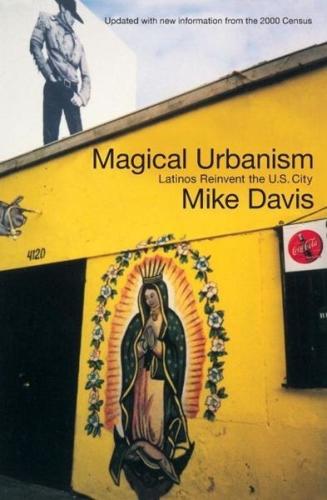
Magical Urbanism: Latinos Reinvent the US City
by
Mike Davis
Published 27 Aug 2001
Thus the glorious sorbet Mexican and Caribbean house paint - mexicano, azul anil, morado - is perceived as sheer visual terrorism by non-Hispanic homeowners who believe that rectly tels verde limon, rosa their equity di- depends upon a neighborhood color order of subdued pas- and white picket fences. Even upwardly mobile Chicanes have joined in the backlash against "un-American" hues, as in the L.A. suburb of South Gate where the City Council recently weighed an ordinance against tropical house colors, or in San Antonio where writer Sandra Cisneros has long outraged her deeply expressive purple home.

Microtrends: The Small Forces Behind Tomorrow's Big Changes
by
Mark Penn
and
E. Kinney Zalesne
Published 5 Sep 2007
According to Valerie Gibson, sex columnist for the Toronto Sun and author of Cougar: A Guide for Older Women Dating Younger Men, the term started in Vancouver, British Columbia, as a put-down for older women who would go to bars and go home at the end of the night with whoever was left. But in recent years, it’s become more positive—signifying an older, single woman who knows what she wants, has the money and confidence to acquire it, and isn’t constrained by desires for babies and a white picket fence. And so now there are at least a half-dozen Web sites devoted to Cougar dating, complete with mugs and T-shirts. Oprah explored “Older Women in Love with Younger Men” in 2003. On the wildly popular Sex and the City, 40-something Samantha Jones dated “boy toy” Smith Jerrod longer than anyone else in the show’s six seasons.
…
Fifty-one percent of Americans still consider homosexuality “morally wrong,” and nearly 60 percent oppose gay marriage. Many Americans (36 percent) think gays should be less accepted, not accepted the same or more. And so as long as homosexuals are second-class in America, a good number of people with gay feelings will shelve those feelings in favor of a heterosexual wedding, a white picket fence, and biological kids. But if, years later, the feelings recur, or arise in whole new ways, there will be Late-Breaking News about their sexual orientation—and a reorientation for everybody else. Dutiful Sons Male Caregivers in America By now, we know well that Americans are living much longer—a person born today can expect to live well past 70, compared to the life expectancy of 47 if you were born in 1900.

Eternity
by
Greg Bear
Published 2 Jan 1988
The wind made the blades of grass hiss and shiver. Snow-ribboned mountains shawled in gray cloud glowered over the plain. The sun was an hour above the Two Thumb Range to the east, its light bright but not warm. Despite the wind, Garry Lanier was sweating. He helped shoulder the coffin through the leaning white picket fence to the new-dug grave, marked by a casually lumpy mound of black earth, his face a mask to hide the effort and the sharp twinges of pain. Six friends served as pallbearers. The coffin was only a finely shaped and precisely planed pine box, but Lawrence Heineman had weighed a good ninety kilos whc. he died.
…
From the front porch, they saw the sun decline in splendor beyond the palms and beach, setting the slopes of Barber’s Point aflame with a gentler fire than that area and its Naval Air Station had known during the Death. A Japanese graveyard lay just west of the senator’s property, behind fresh-painted white picket fencing; Suli Ram Kikura stood there now, Karen beside her, examining the carved lava pagoda-shaped headstones and crosses. “There’s something the old Axis City lacked,” Lanier said. “What’s that?” “Graveyards.” “Far too many here,” Kanazawa said quickly. “Many things must be different up there~we have such close ties, and yet, I sometimes think, so little understanding of each other.

The Ones We've Been Waiting For: How a New Generation of Leaders Will Transform America
by
Charlotte Alter
Published 18 Feb 2020
Because they were marrying later, having fewer kids, and trying to reduce their carbon footprint, millennials wanted to live someplace dense and walkable, with public transportation: boomers’ exurban McMansions held little appeal for them. Once he was elected, Frey eliminated single-family exclusive zoning in Minneapolis, allowing more duplexes and triplexes to be built as part of a $40 million affordable housing plan for the city. “This is not the American dream of the 1950s, where the whole goal was that white picket fence out in the suburbs with a forty-five-minute commute to work,” Frey told me. Millennials “want to sleep at home, but they want to live in a great city and experience diversity and activity around them. That’s a big change.” * * * Since Keith Lamont Scott’s death in 2016, Braxton Winston had decided that if he really wanted anything to change in the police department, he would have to run for office himself.
…
They had spent the days before the election persuading about fifteen friends to go from DC to Philadelphia to knock on doors for Clinton, and on election night they had their friends over to watch the returns on a big projector in their living room. They lived in a small cream-colored row house in Columbia Heights, with a white picket fence and a Black Lives Matter sign in the window. Leah had kept an extra “I Voted” sticker as a memento of the time she voted for the first woman president. The screen was projected onto the wall near the framed front page of The Washington Post from the day the Affordable Care Act was passed, which also happened to be the day Leah and Ezra started dating.
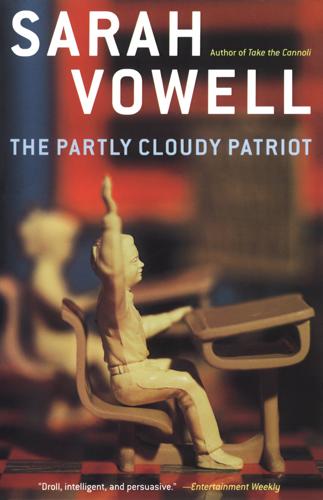
The Partly Cloudy Patriot
by
Sarah Vowell
Published 26 Aug 2002
Unlike the identicals, who act as photocopies of each other, we’re fraternal. Which means that we’re not doubles so much as halves. We’re split down the middle. I’m a single careerist with a walk-up apartment in New York City; she’s a married, dog-owning mother in Montana with a, swear to God, white picket fence. People love that about us, love that I can’t sew on a button but she makes quilts. That’s why people respond to the Luther and Johnny picture. They adore the contrast between the pretty, girlish Johnny and the hyena-faced Luther. Meet Joan of Arc and her brother Genghis Khan. Will Luther and Johnny’s memories meld?

The 5 Love Languages: The Secret to Love That Lasts
by
Gary Chapman
Published 1 Jan 1990
You may also try your hand at writing words of affirmation. Written words have the benefit of being read over and over again. I learned an important lesson about words of affirmation and love languages in Little Rock, Arkansas. My visit with Bill and Betty Jo was on a beautiful spring day. They lived in a cluster home with white picket fence, green grass, and spring flowers in full bloom. It was idyllic. Once inside, however, I discovered that the idealism ended. Their marriage was in shambles. Twelve years and two children after the wedding day, they wondered why they had married in the first place. They seemed to disagree on everything.

The Message
by
Ta-Nehisi Coates
Published 2 Oct 2024
As we drove these roads along the West Bank, our guide pointed out settlements—a word that I had always taken to refer to rugged camps staked out in the desert but in fact the settlements are more akin to American subdivisions, distinguished from the villages of the Palestinians by homes with large red roofs, as surely as a white picket fence denoted the suburbs of twentieth-century America and not its teeming cities. Throughout the West Bank, I saw cisterns used to harvest rainwater. These cisterns were almost certainly illegal—the Israeli state’s hold on the West Bank includes control of the aquifers in the ground and the rainwater that falls from above.

Be Obsessed or Be Average
by
Grant Cardone
Published 20 Sep 2016
Day after day, week after week, quarter after quarter, year after year your obsessions can continue to fuel you. Use this book to undo the average thinking of those you live with, those you work with, and even your customers. Because after seriously resolving to be obsessed and clarifying your obsession, it is vital you get those around you to support you. Your partner might want the white picket fence, the golden retriever, and you home at 5:00 p.m. to watch weekend television marathons, and may talk constantly about simply being happy. Getting your partner on the road to obsession is tough. It requires a plan and a sit-down talk with this person. This may be the biggest challenge of being obsessed, and you must prepare for the sale of your life.

Coastal California
by
Lonely Planet
Information Sonoma Post Office ( 800-275-8777; www.usps.com; 617 Broadway; Mon-Fri) Sonoma Valley Hospital ( 707-935-5000; 347 Andrieux St) Sonoma Valley Visitors Bureau ( 707-996-1090; www.sonomavalley.com; 453 1st St E; 9am-6pm Jul-Sep, to 5pm Oct-Jun) Arranges accommodations; has a good walking-tour pamphlet and information on events. There’s another location at Cornerstone Gardens ( Click here ). Glen Ellen & Around Sleepy Glen Ellen is a snapshot of old Sonoma, with white picket fences, tiny cottages and 19th-century brick buildings beside a poplar-lined creek. When downtown Sonoma is jammed, you can wander quiet Glen Ellen and feel far away. It’s ideal for a leg-stretching stopover between wineries or a romantic overnight – the nighttime sky blazes with stars. Arnold Dr is the main drag and the valley’s back-way route.
…
Nine environmental campsites (tent sites $25) lie just a 1¼-mile hike up Fern Canyon; there’s untreated creek water. For sea-cave kayaking tours ($50), contact Lost Coast Kayaking ( 707-937-2434; www.lostcoastkayaking.com). Mendocino Leading out to a gorgeous headland, Mendocino is the North Coast’s salt-washed gem, with B&Bs surrounded by rose gardens, white-picket fences and New England–style redwood water towers. Bay Area weekenders walk along the headland among berry bramble and wildflowers, where cypress trees stand over dizzying cliffs. Nature’s power is evident everywhere, from driftwood-littered fields and cave tunnels to the raging surf. The town itself is full of cute shops – no chains – and has earned the nickname ‘Spendocino,’ for its upscale goods.
…
Sea View Inn B&B $$ ( 831-624-8778; www.seaviewinncarmel.com; Camino Real btwn 11th & 12th Aves; r incl breakfast $135-265; ) At the Sea View – an intimate retreat away from downtown’s hustle – fireside nooks are tailor-made for reading or taking afternoon tea. The cheapest rooms with slanted ceilings are short on cat-swinging space, but the beach is nearby. Carmel River Inn INN $$$ ( 831-624-1575, 800-966-6490; www.carmelriverinn.com; 26600 Oliver Rd; d $159-319; ) Tucked off Hwy 1, this peaceful garden retreat south of Carmel’s mission rents white-picket-fenced honeymooner and family cottages, many with fireplaces and kitchenettes, and simple country-style rooms. Pet fee $20. Carmel Village Inn MOTEL $$ ( 831-624-3864, 800-346-3864; www.carmelvillageinn.com; cnr Ocean & Junípero Aves; d incl breakfast buffet $80-250; ) With cheerful flowers decorating its exterior, this centrally located motel across from Devendorf Park has pleasant rooms, some with gas fireplaces, and nightly quiet hours.

Coastal California Travel Guide
by
Lonely Planet
It closes early at dinnertime. oCalistoga KitchenCALIFORNIAN$$$ ( MAP GOOGLE MAP ; %707-942-6500; www.calistogakitchen.com; 1107 Cedar St; mains lunch $12-18, dinner $20-36; h5:30pm-close Thu, 11:30am-3pm & 5:30pm-close Fri & Sat, 9:30am-3pm Sun) A sparsely decorated cottage surrounded by a white picket fence, Calistoga Kitchen is especially good for lunch in the garden. The chef-owner favors simplicity, focusing on quality ingredients in a half-dozen changing dishes, such as a delicious braised rabbit. Reservations advised, especially for the patio. SolbarCALIFORNIAN$$$ ( MAP GOOGLE MAP ; %707-226-0860; www.solage.aubergeresorts.com; 755 Silverado Trail N, Calistoga; lounge menu dishes $4-16, dinner mains $26-38; h7am-11:30am, 11:45am-3pm & 5:30-9pm, to 9:30pm Fri & Sat)S We like the Spartan ag-chic look of this Michelin-starred resort restaurant, the menu of which writing maximizes seasonal produce in elegant dishes, playfully composed.
…
Sonoma Valley is a 90-minute drive from San Francisco. 8Getting Around Sonoma Hwy/Hwy 12 is lined with wineries and runs from Sonoma to Santa Rosa, then to western Sonoma County; Arnold Dr has less traffic (but few wineries) and runs parallel up the valley’s western side to Glen Ellen. Plan at least five hours to visit the valley from bottom to top. Glen Ellen & Kenwood Sleepy Glen Ellen is a snapshot of old Sonoma, with white picket fences and tiny cottages beside a poplar-lined creek. When downtown Sonoma is jammed, you can wander quiet Glen Ellen and feel far away. It’s ideal for a leg-stretching stopover between wineries or a romantic overnight – the nighttime sky blazes with stars. Glen Ellen's biggest daytime attractions are Jack London State Historic Park and Benziger winery. 1Sights & Activites Jack London State Historic ParkPARK ( MAP GOOGLE MAP ; %707-938-5216; www.jacklondonpark.com; 2400 London Ranch Rd, Glen Ellen; per car $10, cottage adult/child $4/2; h9:30am-5pm; pc)S Napa has Robert Louis Stevenson, but Sonoma has Jack London.
…
For sea-cave kayaking tours contact Kayak Mendocino ( GOOGLE MAP ; %707-937-0700; www.kayakmendocino.com; Van Damme Beach State Park, 8001 N Hwy 1, Little River; adult/child $60/40; htours 9am, 11:30am & 2pm). Mendocino Leading out to a gorgeous headland, Mendocino is the North Coast’s salt-washed perfect village, with B&Bs surrounded by rose gardens, white-picket fences and New England–style redwood water towers. Bay Area weekenders walk along the headland among berry bramble and wildflowers, where cypress trees stand over dizzying cliffs. The town itself is full of cute shops – no chains – and has earned the nickname ‘Spendocino,’ for its upscale goods. Built by transplanted New Englanders in the 1850s, Mendocino thrived late into the 19th century, with ships transporting redwood timber from here to San Francisco.

Assassination Vacation
by
Sarah Vowell
Published 28 Mar 2005
But the homes that are here are more gracious and livable than the melancholy slabs up the beach. The marker about Garfield’s death is clearly an afterthought, a little tombstone next to a hedge on the side of a garage. It’s possible to see what Garfield saw from his window. You just have to look past a white picket fence. Across the way, Joan Schnorbus from the Long Branch Historical Association is waiting for us in front of St. James Chapel, where Garfield and the six other vacationing presidents went to church. For that reason, it is known as the Church of the Presidents. It was deconsecrated in 1953 and turned into a historical museum.
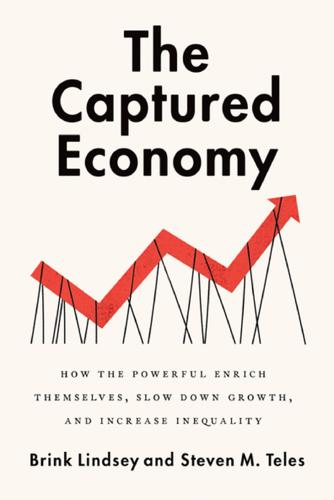
The Captured Economy: How the Powerful Enrich Themselves, Slow Down Growth, and Increase Inequality
by
Brink Lindsey
Published 12 Oct 2017
Meanwhile, subsidies for mortgage finance as well as increasingly restrictive land-use regulations benefit from the overwhelmingly positive image of home ownership. Home ownership is associated with family life, roots in the community, and the sturdy bourgeois virtues. Indeed, there is no image more readily associated with the “American dream” than a house with a white picket fence. Any policies that plausibly promise to extend more broadly the blessings of home ownership will thus benefit from enormously powerful emotional associations with love of family and love of country. In some cases, the power of affluent rent-seekers resides in the fact that their resources allow them to hire lobbyists with networks on both left and right to project different images to the two parties in our polarized system.

My Year of Rest and Relaxation: A Novel
by
Ottessa Moshfegh
Published 9 Jul 2018
My relatives are over, but they won’t think you’re being rude or anything. We don’t have to be at the funeral home until two.” We passed a high school, a library, a strip mall. Why anyone would want to live in a place like that was beyond me. Farmingdale State College, a Costco, five cemeteries in a row, a golf course, block after block of white picket fences with perfectly snowblown driveways and walkways. It made sense that Reva had come from a place as lame as this. It explained why she slaved away to fit in and make a home for herself in New York City. Her father, she’d told me, was an accountant. Her mother had been a secretary at a Jewish day school.

The Right Side of History
by
Ben Shapiro
Published 11 Feb 2019
The attempt to paint the American dream as an American nightmare had common currency on the American Left; Sinclair Lewis’s Babbitt (1922) painted a businessman as an unfulfilled dreamer, coining the term Babbitt as an insult for everyday Americans. But in the aftermath of World War II, the American dream was still very much alive. And that dream was never merely a white picket fence, a dog, and two kids out in suburbia. It was a dream of cultural enrichment and common purpose. As Fred Siegel reports, between 1940 and 1955, local symphony orchestras increased 250 percent; in 1955, thirty-five million people paid to attend symphonies as opposed to fifteen million paying to attend baseball games.

Wordslut: A Feminist Guide to Taking Back the English Language
by
Amanda Montell
Published 27 May 2019
A friend of mine, who is first-generation American, once told me that when she was growing up, her Japanese father made her put a dollar in a jar every time she used a slang word. “He thought it made me sound low class,” she said. “He was an immigrant.” For folks like my friend’s dad, speaking “proper” English is the way to the big house with the white picket fence. It’s the idea that if you want to be a CEO, you have to sound like one, and not caring about grammar means not caring about your future itself. All that said, it’s also true that not all language purists have the same background or whip out their red pen with the same agenda in mind. Plenty of folks oppose singular they due to their social conservatism, but some of the biggest grammar snobs in America actually come from the political left.

The Soul of Wealth
by
Daniel Crosby
Published 19 Sep 2024
According to a 2021 Pew Research survey of 19,000 adults across 17 developed countries, careers and material well-being are among the most common factors that determine a purposeful life.66 Thirty-eight percent of respondents cite family and children as most crucial, followed by occupation and career. Ranking toward the middle are freedom and independence, along with hobbies and recreation. It’s easy and even heart-warming to picture life with a loving family, a rewarding career, and relaxing weekend activities. That, along with Lassie and a white picket fence in the suburbs, is basically the American Dream. But you have to work for the American Dream—it is not served on a platter for any of us. Each of life’s key elements that determine happiness and contentment requires a degree of risk-taking to achieve it. One of the most perilous undertakings is tying the knot.

Aerotropolis
by
John D. Kasarda
and
Greg Lindsay
Published 2 Jan 2009
This became the core of what is today called Heritage Creek, the aerotropolis’s first purpose-built suburb. The setting is bucolic. We wended our way down country roads, past Erector-set subdivisions with names like Woodridge Crossing and Cedar Brook (“New homes from the 150s!”) until we reached a white picket fence bearing “HC” heraldry. “They designed the city the way they wanted it,” Burt said. “The chairman of the planning commission said, ‘This looks like it came out of a 1950s subdivision!’ Well, duh! These people came out of a 1950s subdivision; it’s all they know!” And sure enough, it was. They had used their walkaway money to buy lots and choose homes from a handful of specs.
…
His was one in a cluster of Spanish Mission revivals, replete with clay tiles, stucco walls, and a corredor for a porch. It sat across the street from a grassy postage stamp of a yard, shared equally by a square of cottages and Victorians, their porches offset neatly from the sidewalks with a white picket fence. Down the block, an otherwise boring brick mansion with a wraparound porch boasted a sign proclaiming it one of LEED’s pilots. But the strangest sight lay not far away. Turning a corner, I came face-to-face with a quarter mile of brownstones lining Stapleton’s grand boulevard, looking exactly like my own back in Brooklyn.

Ctrl Alt Delete: Reboot Your Business. Reboot Your Life. Your Future Depends on It.
by
Mitch Joel
Published 20 May 2013
There are countless lessons to be learned from looking at the type of people and companies that were featured in Fast Company magazine’s Generation Flux cover story. And that was only the tip of the iceberg. In your current role, do you have faith that after twenty years of solid service you will retire with benefits to that white-picket-fenced house out in the country? Are you really counting on the send-off dinner where you will be given a plaque commemorating your service… or that gold watch? I think (hope) that you now realize there’s no gold watch in your future. Lesson #4—Embrace the mindset. You don’t have to run a startup to run your career like a startup, but you do have to embrace and embody the mindset.
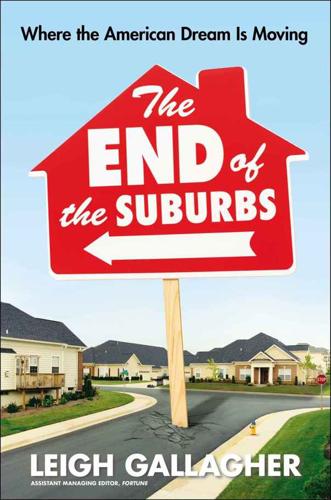
The End of the Suburbs: Where the American Dream Is Moving
by
Leigh Gallagher
Published 26 Jun 2013
Despite their differences, the American suburbs share one thing in common—they evoke a certain way of life, one of tranquil, curving streets and cul-de-sacs; marching bands and soccer leagues; bake sales and PTA meetings and center hall colonials. The phrase “the American Dream” immediately brings to mind images of the single-family home with a white picket fence; the suburbs have also provided the setting for so many of our iconic cinematic moments. They are where Macaulay Culkin got left home alone; where Ferris Bueller took the day off; where Jake kissed Samantha in Sixteen Candles; and where Joel Goodsen, therefter remembered only as Tom Cruise, first strutted his stuff in Risky Business.
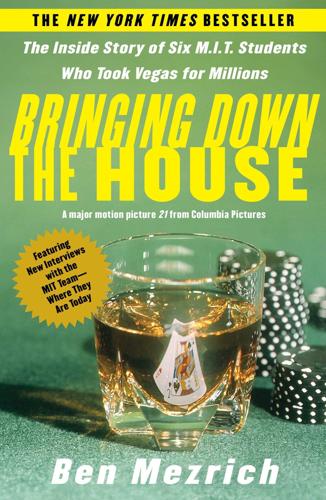
Bringing Down the House: The Inside Story of Six M.I.T. Students Who Took Vegas for Millions
by
Ben Mezrich
Published 2 Dec 2002
The fight was about to begin. Eleven Weston, MA, Thanksgiving 1994 T here’s no neon in Weston, Massachusetts. Twenty minutes from Boston by Mercedes-Benz, Weston was an uppermiddle-class enclave separated from the real world by a tree-lined stretch of the Mass Pike. The sleepy New England town was suburbia incarnate: white picket fences, yellow school buses with blinking red lights, colonial homes, lush green lawns, lemonade stands, tennis courts, basketball hoops, tree houses, porch swings, dogs on leashes, kickball and flashlight tag, public schools that looked like prep schools and prep schools that looked like Ivy League universities.

Worth Dying For: The Power and Politics of Flags
by
Tim Marshall
Published 21 Sep 2016
Charles Evans Hughes, US Secretary of State 1921–5 Supporters of the banned organization Jamaat-ud-Dawa burn the Stars and Stripes in Quetta, Pakistan, in May 2016, protesting against a US drone strike on Pakistani soil. O SAY, CAN YOU SEE, BY THE DAWN’S EARLY LIGHT? IN THE USA the answer is an emphatic yes. From dawn to dusk America is a riot of red, white and blue. The flag flies from government buildings, atop supermarkets and car showrooms, from the roof of the grandest mansion to the humblest white-picket-fenced homestead, and from the log cabin to the White House. In the morning it rises, hoisted onto a million flagpoles, as ‘God’s Own Country’ sets about creating anew each day the most successful nation yet seen on earth. This is the Star-Spangled Banner. The most recognizable, loved, hated, respected, feared and admired flag in the world.

The Life and Loves of a He Devil: A Memoir
by
Graham Norton
Published 22 Oct 2014
Although I had noticed the clientele was an odd combination of older gentlemen and younger Latino guys and there seemed to be an abundance of ATMs inside the venue, I didn’t put two and two together until one of the cuter customers came over to talk to me. It was a hustler bar (of course it was) and the man speaking to me, called Sammy, did exactly that for a living. He was very funny and told me some great stories, especially one about a punter who had taken him back to his hotel. Once inside the room Sammy had noticed a miniature white picket fence squaring off a piece of the floor. Within it was a live chicken. Not just any chicken, the man explained – this was a showbiz chicken and had appeared in one of the Babe films no less. The man wanted Sammy to give him a blow job, but while the chicken was looking. Given that the bird had had no interest in seeing Sammy devour a fat worm, there was a great deal of shuffling about on his knees trying to remain in the chicken’s eye line.

Summer of Our Discontent: The Age of Certainty and the Demise of Discourse
by
Thomas Chatterton Williams
Published 4 Aug 2025
The oddness of the subject’s appearances aside, I thought, it is their intrinsic Americanness—these are not interlopers, upstarts, or new arrivals—that manifests itself in so many subtle and thought-provoking moments throughout the exhibition. One of the most arresting canvases, Bang, depicts a trio of jet-black children, one girl and two boys, standing in a spacious and pristine backyard replete with barbecue grill and white picket fence. The girl, with braided hair and a pink skirt, regards the boys while holding an American flag; the boys, dressed identically in white T-shirts and black-and-white Converse All Star sneakers, solemnly regard the flag, their right hands on their chests in salute. “WE ARE ONE,” reads a banner curling beneath the children’s feet, and down there too are four pink clouds.

California
by
Sara Benson
Published 15 Oct 2010
Earthworks ( 707-935-0290; 403 1st St W) Cool consignment jewelry and art glass. Artifax ( 707-996-9494; 450c 1st St E) Unusual Asian artifacts, rare beads and spiritual objects. Return to beginning of chapter GLEN ELLEN pop 990 Sleepy Glen Ellen is a snapshot of old Sonoma, with white picket fences, tiny cottages and ramshackle 19th-century brick buildings beside a poplar-lined creek. When downtown Sonoma is jammed, you can wander quiet Glen Ellen and feel far from civilization. It’s ideal for a leg-stretching stopover between wineries or a romantic overnight – the nighttime sky blazes with stars.
…
Enjoy all the intimate feel of a B&B without the have-to-chat-with-the-newlyweds-in-the-hall social pressure. A full vegetarian breakfast is included. In the evenings there’s complimentary wine. Strawberry Valley Court ( 530-926-2052; 305 Old McCloud Rd; cabins from $90) The Inn’s equally cute sister property has a white picket fence and shady brick cabins with private garages. Several modest motels stretch along S Mt Shasta Blvd. All have hot tubs and rooms cost between $60 and $140 in peak season: Swiss Holiday Lodge ( 530-926-3446; www.snowcrest.net/swissholidaylge; 2400 S Mt Shasta Blvd; ) Quiet. Evergreen Lodge ( 530-926-2143; www.snowcrest.net/evergreenlodge; 1312 S Mt Shasta Blvd; ) Friendly.
…
You can use it to connect to Angels Camp ($1.50, 30 minutes, several times daily) and other surrounding towns. Take the bus to Lodi ($3, 45 minutes, several times daily), where you can connect through Amtrak and Greyhound to Sacramento. Return to beginning of chapter MURPHYS pop 3400 / elev 2171ft With its white picket fences and old world charm, Murphys is one of the most picturesque towns along the southern stretch of Gold Country, befitting its nickname as ‘Queen of the Sierra.’ It lies 8 miles east of Hwy 49 on Murphys Grade Rd, and is named for Daniel and John Murphy, who founded a trading post and mining operation on Murphy Creek in 1848, in conjunction with the local Maidu people.
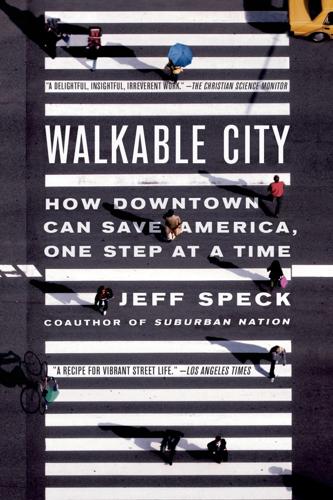
Walkable City: How Downtown Can Save America, One Step at a Time
by
Jeff Speck
Published 13 Nov 2012
Writing about West’s research in The New York Times Magazine, Jonah Lehrer notes: In recent decades, though, many of the fastest-growing cities in America, like Phoenix and Riverside, Calif., have given us a very different urban model. These places have traded away public spaces for affordable single-family homes, attracting working-class families who want their own white picket fences. West and Bettencourt point out, however, that cheap suburban comforts are associated with poor performance on a variety of urban metrics. Phoenix, for instance, has been characterized by below-average levels of income and innovation (as measured by the production of patents) for the last 40 years.35 These findings align with a recent Environmental Protection Agency study that found, state by state, an inverse relationship between vehicle travel and productivity: the more miles that people in a given state drive, the weaker it performs economically.● Apparently, the data are beginning to support the city planners’ bold contention that time wasted in traffic is unproductive.

Nomadland: Surviving America in the Twenty-First Century
by
Jessica Bruder
Published 18 Sep 2017
“I honestly don’t know if I would have been brave enough to do it if I hadn’t been forced into it,” Bob admits on his website. But in retrospect, he’s glad the change happened. “When I moved into the van, I realized that everything that society had told me was a lie—that I had to get married and live in a house with a white picket fence and go to work, and then be happy at the very end of my life, but be miserable until then,” he told me in an interview. “I was happy for the first time ever living in my van.” In 2005, Bob started CheapRVLiving.com. The website began as a modest collection of how-to articles for readers hoping to live in a vehicle on a shoestring budget.
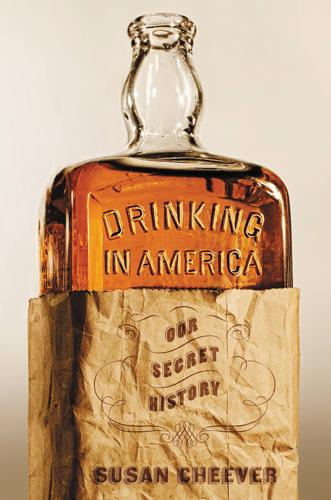
Drinking in America: Our Secret History
by
Susan Cheever
Published 12 Oct 2015
Stone condemned the tendency to turn a whole generation of Americans into “stool pigeons.”223 Although McCarthy also targeted homosexuals—he was an equal-opportunity bully—it was his undocumented attack on communism that made him famous. In the 1950s the threat of communism was both horribly real and entirely imaginary. The Russians were armed and ready to attack us. The Russians would come marching down Main Street past our white picket fences. The Russians were in submarines just off the Atlantic Coast waiting to take over our suburbs. Drew Pearson reported that President Harry Truman’s secretary of defense, James Forrestal, stoked on pills and alcohol, was discovered in the street in his pajamas in a state of terror because he believed the Russians had invaded Bethesda.

The Buddha and the Badass: The Secret Spiritual Art of Succeeding at Work
by
Vishen Lakhiani
Published 14 Sep 2020
Most people learn that to attain life fulfillment, you must acquire three things: A certain role or title (which gives you prestige) A certain balance in your bank account (which gives you wealth) Acquisition of specific material positions like a car or a house with a white picket fence The result: Success. Right? Nope. Rao would call that an “if/then life.” He says you have to stop hanging your happiness on your title and your money and your stuff. Stop thinking, “I need X to be successful or happy.” (How many times have you gotten X and still not felt happy?)
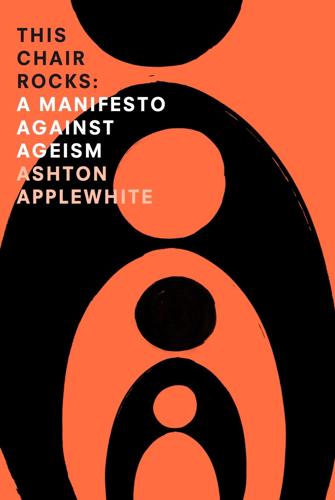
This Chair Rocks: A Manifiesto Against Ageism
by
Ashton Applewhite
Published 10 Feb 2016
To share the worry and apportion the logistics? To bail on the standard all-or-nothing proposition, and contribute to a network that will support you in turn, should the need arise? And to not have to relinquish those solitary pleasures? There are many different frameworks for friendship, intimacy, and love besides the mainstream, white-picket-fence, King Charming, Hollywood scenario. Longer lives offer the opportunity to explore them. Wherever we fall on the spectrum—men and women, trans men and trans women, straight and gay, bi and bi-curious, monogamous and polyamorous, older and younger, “imperfect” and way beyond perfect—take heart!

The Future Was Now: Madmen, Mavericks, and the Epic Sci-Fi Summer Of 1982
by
Chris Nashawaty
As for Star Trek II, it would not only turn out to be the franchise’s finest hour, it single-handedly saved it from a premature extinction, without which the flame of Gene Roddenberry’s hopeful vision of the future might have been extinguished forever. Poltergeist would become a prescient metaphor for go-go ’80s greed and the me-first Reagan era as well as a prophetic wake-up call telling us that everything wasn’t rosy behind the white picket fences and manicured lawns of modern suburbia. The Road Warrior would take our most harrowing doomsday visions of a lawless, fossil fuel–free postapocalyptic future and etch them in heavy-metal lightning on the silver screen, warning us about the dangers of oil dependence and our depleting natural resources.
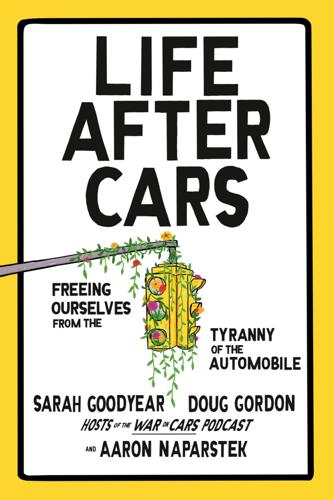
Life After Cars: Freeing Ourselves From the Tyranny of the Automobile
by
Sarah Goodyear
,
Doug Gordon
and
Aaron Naparstek
Published 21 Oct 2025
In the words of one of Appleyard’s respondents, “This street is murder.” Cars make us scared and suspicious of one another. Cars make us lonely. Driving Alone The picture-postcard version of the American dream has long been a detached home surrounded by greenery and, of course, that legendary white picket fence. Plenty of room to be yourself, without any interference from the neighbors. Plenty of space to be alone. But every dream can turn into a nightmare if it’s twisted right. And the flip side of blissful solitude is loneliness. We’ve all heard about the “loneliness epidemic” in American society and how it’s contributing to a host of ills—depression, anxiety, self-harm, apathy, paranoia, political division.

Frommer's Washington State
by
Karl Samson
Published 2 Nov 2010
Luckily, this pigheadedness was defused, and a more serious confrontation was avoided. The English Camp unit of the historical park is set on picturesque Garrison Bay, and, with its huge old shade trees, wide lawns, and white wooden buildings, it’s the epitome of British civility. There’s even a formal garden surrounded by a white picket fence. You can look inside the reconstructed buildings and imagine the days when this was one of the most far-flung corners of the British Empire. If you’re full of energy, hike the 1.25-mile trail to the top of 650-foot Mount Young for a beautiful panorama of the island. An easier 1-mile hike hugs the shoreline out to the end of Bell Point.
…
Together the state park and the two preserves have more than 3 miles of hiking trails, making this the best hiking area on the island. As Westside Road moves inland, it becomes Bailer Hill Road. As you cross the island, watch for the picture-perfect Shepherd’s Croft, 2575 Bailer Hill Rd. (& 360/378-6372), a sheep farm set behind a white picket fence. A small store here sells sheepskins, yarn, baby sweaters, and a variety of other products. Tours of the farm can be arranged. From here, take a left onto Wold Road, and you will come to Pelindaba Lavender Farms, 33 Hawthorne Lane (& 866/819-1911 or 360/ 378-4248; www.pelindaba.com). The farm has roughly 20 acres of lavender plants, including a cutting field where visitors can cut their own lavender stems.

Saving America's Cities: Ed Logue and the Struggle to Renew Urban America in the Suburban Age
by
Lizabeth Cohen
Published 30 Sep 2019
MAKING CHARLOTTE GARDENS GROW It was such a startling idea that it made headlines not just in New York City but nationally and even internationally. In the middle of decimated Charlotte Street—President Carter’s stomping ground—Logue’s SBDO constructed Charlotte Gardens, a new neighborhood of ninety freestanding single-family homes with white picket fences that were heavily subsidized for purchase. It was nothing less than the suburban American dream plopped down in the middle of one of the worst neighborhoods in the city, if not the nation. As Logue had familiarized himself with the South Bronx, he had noticed that amid ravaged blocks, a few homeowners persisted in caring lovingly for their homes.
…
Logue grew to admire the parish-level priests like Gigante and Smith, who devoted themselves to neighborhood improvement, displaying a more grassroots level of Catholic Church commitment to urban renewal than seen in Boston, where the Archbishop had taken the lead. (PHOTO BY BETTMANN ARCHIVE / GETTY IMAGES) THE (PHOTO) SHOT SEEN 'ROUND THE WORLD. When this image of Logue standing behind the white picket fence of a Charlotte Gardens home appeared in New York magazine in June 1984, it was just one of hundreds of photos publicizing this unique project. Charlotte Gardens helped to turn around the South Bronx, inspiring many of the strategies that would bring thousands of new and rehabbed housing units to New York City through Mayor Koch’s ten-year plan, more than sixty-five thousand to the Bronx alone. (© JON LOVE, 2018) VELEZ BEATS OUT LOGUE FOR SCARCE HUD DOLLARS.
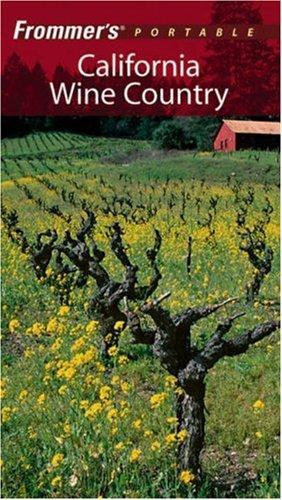
Frommer's Portable California Wine Country
by
Erika Lenkert
Published 8 May 2006
. $165–$255 double weekdays; $195–$300 double weekends. Rates include continental breakfast. AE, DISC, MC, V. Amenities: 2 pools; spa; 2 Jacuzzis. In room: A/C, dataport, hair dryer, iron upon request. INEXPENSIVE Brannan Cottage Inn This cute little 1860 cottage, complete with the requisite white picket fence, sits on a quiet side street. One of Sam Brannan’s original resort cottages, the inn was restored through a community effort to salvage an important piece of Calistoga’s heritage; it’s now on the National Register of Historic Places. The six spacious rooms are decorated with down comforters and white lace curtains; each room also has a ceiling fan, private bathroom, and its own entrance; three rooms have four-poster beds.

Wonderland: How Play Made the Modern World
by
Steven Johnson
Published 15 Nov 2016
But most of us today can appreciate that holiday scene for the extraordinary achievement it is. Once you get past the Macy’s fireworks display, Fourth of July imagery and rhetoric is usually full of old-time Americana: the small town’s one fire truck decked out for the main-street parade, the Little League game, the white picket fences with their patriotic bunting. There is plenty to celebrate about the joys of small communities, but in a way, there is nothing particularly original about that story. World history is teeming with small, successful communities united by a common culture and worldview, after all. What is much rarer is that Fourth of July scene in Prospect Park, and in most urban parks in metropolitan centers around the world.

Ground Control: Fear and Happiness in the Twenty First Century City
by
Anna Minton
Published 24 Jun 2009
One particularly draconian lease prohibited dogs over 30 lbs, while according to the rules of another, plants and flowers, not only in front gardens but also in back gardens, have to be approved. ‘If I want to plant my tulips, I have to get it approved first by the committee,’ a resident in one gated community said.26 In Hidden Hills, a private gated community in California, which is entirely independent of local government, white picket fences are mandatory. The long lists of rules are similar in Britain, although some residents fail to realize this, buying their homes without reading the fine print of incredibly long and complex leases. In John’s gated development, on the site of the former Victorian poorhouse, all the houses look exactly the same, with the same navy-blue front doors, identical front porches and the same leading on the windows.
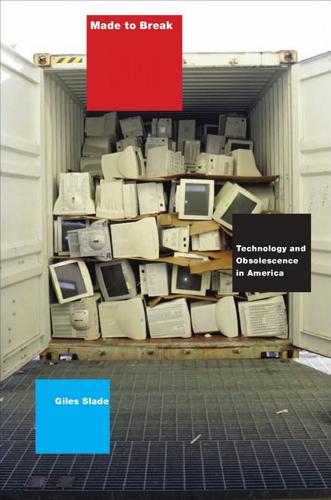
Made to Break: Technology and Obsolescence in America
by
Giles Slade
Published 14 Apr 2006
In his fina book, The Green Imperative, Frank Lloyd Wright’s most famous apprentice, Victor Papanek, shared this recollection from the 1970s: “One of my favorite photographs . . . showed more than 600 engineers’ slide rules stuck into the ground around a neighbor’s lawn, forming a tiny, sardonic, white picket fence. When I asked about it my neighbor’s wife said, ‘We bought these slide rules for one dollar a barrel . . . and used all six hundred.’”27 Of more interest than the diminishing cost of calculators and the demise of the slide rule is the obsolescence of the skill set that older-generation engineers possessed.
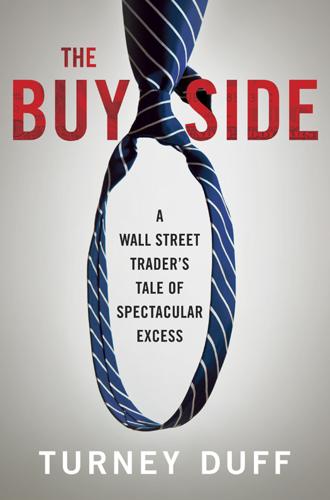
The Buy Side: A Wall Street Trader's Tale of Spectacular Excess
by
Turney Duff
Published 3 Jun 2013
As we sit, I can’t take my eyes off my little princess: the plastic diamond tiara in her dark hair, her skin the color of pearls. She pushes the meat out of the way; she’s much more interested in the potato chips and orange soda. After a few bites, she’s off to the yard to chase the dogs. Inside the white picket fence, the lawn is a carpet of red leaves from the Japanese maple trees. Lola and the dogs run back and forth. Jenn sits across from me wearing a designer jean jacket with a fur collar. “I’m getting nervous,” I say. She tilts her head sideways, curious, and puts a little more salad on her plate.

Street Smart: The Rise of Cities and the Fall of Cars
by
Samuel I. Schwartz
Published 17 Aug 2015
Having sex (the researchers call it “intimate relations,” but they’re not fooling anybody) came in first. Socializing after work came in second. The “morning commute” was dead last, just a little worse than “evening commute.” And the effect of the commute on the ideal home in the suburbs, with or without the white picket fence, was damaging too. The comfortable suburban home that persuaded them to take on the commute in the first place might appreciate in value over time, but the enjoyment of it doesn’t. People who move to larger houses adapt to the larger size almost immediately, at which point it offers essentially no increase in gratification.

The Ghost
by
Robert Harris
Published 22 Oct 2007
At first I couldn’t make out whether he was sympathetic or disapproving; then I realized he was trying to tell me it was no use talking to him: he was deaf. I went back to staring out the window. After a while we came to a crossroads and turned left into what I guessed must be Edgartown, a settlement of white clapboard houses with white picket fences, small gardens, and verandas, lit by ornate Victorian street lamps. Nine out of ten were dark, but in the few windows that shone with yellow light I glimpsed oil paintings of sailing ships and whiskered ancestors. At the bottom of the hill, past the Old Whaling Church, a big misty moon cast a silvery light over shingled roofs and silhouetted the masts in the harbor.

Microserfs
by
Douglas Coupland
Published 14 Feb 1995
She said, "You spent my vested stock money on . . . Lego?" She was purple. Ethan looked at me: "Michael's addiction." I, too, was flubbered. In the magic of the moment I looked up into the corner - and I caught Mom looking, too - at a small white house in the far back corner, sprouting from a wall, with a little white picket fence around it, the occupant inside no doubt surveying all that transpired beneath its windows, and I said, "Oh, Dad, this is - the most real thing I've ever seen." * * * And I wondered then, how do we ever know what beauty lies inside of people, and the strange ways this world works to lure that beauty outward?

The Glass Hotel
by
Emily St. John Mandel
Published 14 Jun 2020
They’d just spent the pre-Christmas season at a warehouse in Arizona, ten-hour days of walking quickly over concrete floors with a handheld scanner, bending and lifting, and had retreated to a campground outside Santa Fe to recuperate. Difficult work, and it got harder every year, but they’d made enough money to get the engine repaired and add to their emergency fund, and now they were resting in the high desert. Across the road was a tiny graveyard of wood and concrete crosses, a white picket fence sagging around the perimeter. “We could do a lot worse,” Leon said. They were sitting at a picnic bench by the RV, looking at a view of distant mountains turning violet in the sunset, and he felt at that moment that all was well with the world. “We move through this world so lightly,” said Marie, misquoting one of Leon’s favorite songs, and for a warm moment he thought she meant it in a general sense, all of humanity, all these individual lives passing over the surface of the world with little trace, but then he understood that she meant the two of them specifically, Leon and Marie, and he couldn’t blame his chill on the encroaching night.
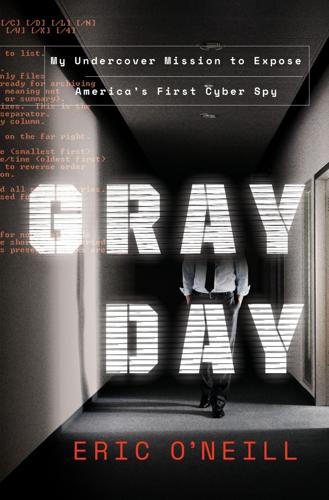
Gray Day: My Undercover Mission to Expose America's First Cyber Spy
by
Eric O'Neill
Published 1 Mar 2019
The Heathfield-Foleys and Chapman blindsided the FBI by embracing new spy technology to communicate with Moscow. Anna would sit in a coffeehouse in the middle of the day like so many other young professionals, clicking through her laptop over a latte. Donald and Tracey would upload pictures of their beautiful family and white-picket-fenced home to a file-sharing site. Covertly, as Anna sat in the coffeehouse, her laptop would directly pair with the laptop of a Russian intelligence officer parked nearby. A different intelligence officer in Moscow would download and decrypt the Cambridge couple’s pictures, revealing through digital steganography the secrets hidden within.
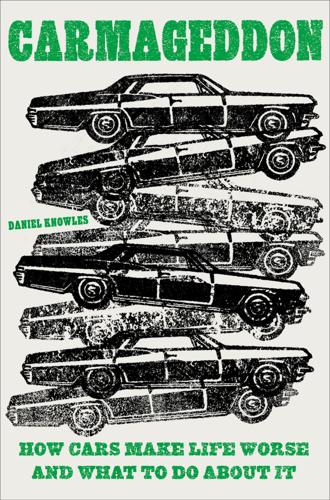
Carmageddon: How Cars Make Life Worse and What to Do About It
by
Daniel Knowles
Published 27 Mar 2023
Thanks to Eisenhower’s transport bill, most of the cost of roads was funded by the federal government, whereas there was no federal money for public transport. But the freeways did not help keep the city alive. Instead, they almost killed it. As it became easier to drive into the city, more people moved out to the suburbs. Suddenly developers could build new homes in the countryside, with gardens and plenty of parking and white picket fences, and the promise that the buyers could speed back into the city to their jobs, bypassing the neighborhoods they left behind entirely. The developers were subsidized directly by the Federal government, which offered people cheap mortgages to buy new homes being constructed in the countryside.
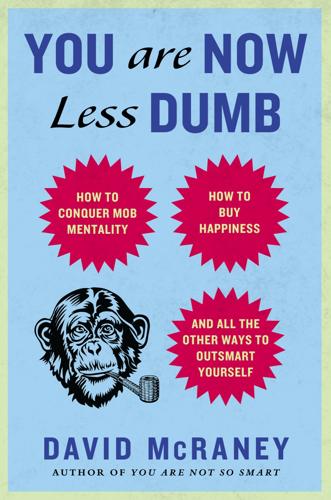
You Are Now Less Dumb: How to Conquer Mob Mentality, How to Buy Happiness, and All the Other Ways to Outsmart Yourself
by
David McRaney
Published 29 Jul 2013
Without that belief, your spirit dwindles quickly, as Langer showed in her later studies in which permanent residents of nursing homes tended to live shorter lives and develop more illnesses when they were no longer allowed to choose their activities or arrange furniture to their liking. The third great positive illusion is optimism bias, the mental construct that provides smokers the belief they’ll be among those who escape cancer, motorists the confidence they can speed during rainstorms, couples the certainty they will die hand in hand behind a white picket fence, and immigrants the beamish tenacity to open a new business in a down economy. No matter the statistical odds, no matter how many examples to the contrary you’ve seen in your life, you have a tendency to believe everything will work out in the end, and it is hard to argue with this approach to life when you consider the alternative.

The Hot Zone
by
Richard Preston
Published 1 Jan 1994
The killers and the unknowns were his specialty. He deliberately kept his mind off the effects of hot agents. He told himself, If you did think about it, you might decide to make a living another way. Jahrling, his wife, and their three children lived in Thurmont, not far from Nancy and Jerry Jaax, in a brick ranch house with a white picket fence out front. The fence surrounded a treeless yard, and there was a large brown car parked in the garage. Although they lived near each other, the Jahrlings did not socialize with the Jaaxes, since their children were of different ages and since the families had different styles. Peter Jahrling mowed his lawn regularly to keep the grass neat, so that his neighbors wouldn’t think he was a slob.
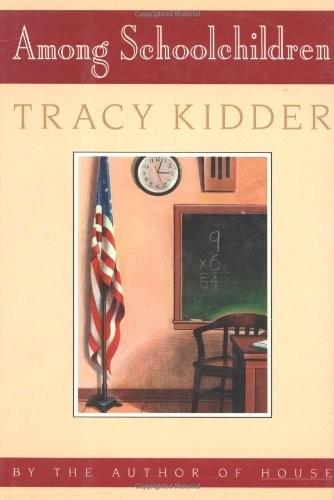
Among Schoolchildren
by
Tracy Kidder
Published 14 Jun 1989
The Towne house, a white federalist mansion that once belonged to a successful New England merchant of Charlton, Massachusetts, sits at one end of the green. At the other, on a little rise, the tall, porticoed Center Meetinghouse, a Baptist church in its former life, presides over the town common. The village gleamed in spring sunshine. The hardwoods were in leaf, the flowers blooming in the gardens behind white picket fences. People in period costume, the living mannequins of the village, passed by Mrs. Zajac's class. A young man in a straw hat and breeches with suspenders walked along an edge of the common beside a pair of perfect oxen, groomed as if they were racehorses. Young women walked by in long dresses and white bonnets.
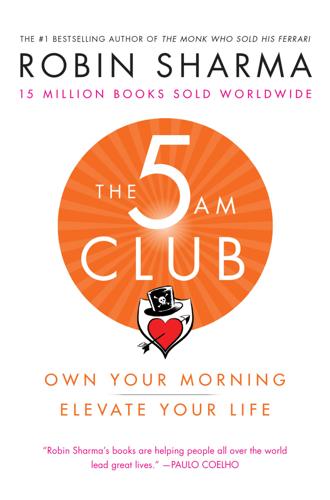
The 5 AM Club: Own Your Morning. Elevate Your Life.
by
Robin Sharma
Published 4 Dec 2018
A little earlier, at 5 AM, the billionaire had taken the entrepreneur and the artist on a mountain bike ride that began on the wine farm, then meandered down Daniel Hugo Street and into the village—past well-used horse stables, lazy dogs that moved as slow as snails on Prozac and rose bushes that had twisted along the white picket fences that had been erected along both sides of the rough dirt road. It really was a near-perfect little place the billionaire had selected as the setting for his second-to-last mentoring session. The lesson that the billionaire had presented as the three of them rode together centered on the vital importance of balancing elite personal performance with deep self-renewal for sustained masterful achievement.

Trick Mirror: Reflections on Self-Delusion
by
Jia Tolentino
Published 5 Aug 2019
The Obama administration nationalized most of the student loan industry as part of the 2010 Affordable Care Act legislation, and so this web of securitized debt is government business, and it is expanding rapidly—student debt ballooned to over $1.5 trillion in 2018. But there’s one major difference between housing debt and education debt: at least for now, if you hope to improve your life in America, you can’t quite turn away from a diploma the way you can a white picket fence. In the meantime, tuition increases have done little to improve the education students receive. Faculty jobs, like most jobs, have become unstable and precarious. Salaries are stagnant. In 1970, nearly 80 percent of college faculty were employed full-time; now less than half are full-time.

Amazon: How the World’s Most Relentless Retailer Will Continue to Revolutionize Commerce
by
Natalie Berg
and
Miya Knights
Published 28 Jan 2019
Carrefour describes the store, which also features a meeting room and lounge bar serving more than 200 Italian and international beers, as an innovative solution for busy city dwellers ‘who seek more than ever to combine pleasure, work and socialization’.13 In the future, we believe hybrid store concepts like Carrefour’s will become a common sight in urban areas around the globe. According to the UN, two-thirds of the world’s population will live in cities by 2050,14 and in the US today, many cities are growing faster than their suburbs as millennials forgo the white picket fence dream in favour of a no-strings-attached urban lifestyle. As urbanization takes hold, physical spaces must adapt by becoming smaller, more convenient and multi-dimensional. ‘The trend of urbanization is something we must all recognize and understand’, says Adam Neumann, CEO and co-founder of shared office space provider WeWork.

The Undertow: Scenes From a Slow Civil War
by
Jeff Sharlet
Published 21 Mar 2023
“Every few seconds there was a sickening thud as a rock crashed against a skull of one of our boys,” Fast later wrote. “Some held their places with blood pouring from their torn scalps; others went down.” Night fell. A lull followed. The policemen were no longer there. The mob shifted shape. Then it charged, through the dark in waves, men with billies and men with bottles, fools with posts ripped from white picket fences. Lee and Pete later memorialized the fight in a song “Hold the Line,” which would become an anthem of the civil rights movement: Hold the line, hold the line, As we held the line at Peekskill We will hold it everywhere. But the truth was that they held the line only by backing it up, foot by bloody foot, till they were pushed into a ring around the stage.

1,000 Places to See in the United States and Canada Before You Die, Updated Ed.
by
Patricia Schultz
Published 13 May 2007
The Perfect American Small Town and the State’s Oldest Inn ESSEX Connecticut A dignified, Revolutionary War–era spirit lingers in Essex, a mint-condition one-traffic-light village on the Connecticut River, where early colonial and federal houses tell of the town’s shipbuilding heyday. On Main Street, white picket fences frame many landmark buildings, a mix of grand private homes and specialty stores. You can learn about the town’s seafaring heritage at the waterfront Connecticut River Museum, which sits 5 miles north of where the river empties into Long Island Sound. It comprises an 1870s steamboat warehouse filled with ship models and maritime artifacts, including a full-scale replica of America’s first submarine, The Turtle, built during the Revolutionary War.
…
Over its 34 miles, the road opens onto dramatic water views and passes a plethora of antiques shops to fill your afternoon with browsing. A classic Cape Cod seascape in Chatham. The old sea captain’s town of Chatham is one of the Cape’s most desirable addresses. Shops, art galleries, and eateries line picture-perfect Main Street, a stretch of clapboard buildings, white picket fences, and flowering gardens and window boxes. Built in 1839, the dignified Captain’s House Inn has romantic rooms with four-posters and fireplaces. You can walk to dinner at the Impudent Oyster, where the sophisticated menu (mainly seafood) and white-linen ambience are a welcome break from the ubiquitous clam shacks and sub shops.
…
Meanwhile, French utopian Étienne Cabet and his followers, the Icarians, established a small commune in Nauvoo, but that too was short-lived; it lasted only from 1849 to 1856. Today, as many as 60 sites in Nauvoo have been richly restored to their mid-1800s appearance, earning the town the nickname “Williamsburg of the Midwest.” Tour the historic district by horse carriage or on foot, passing beautiful brick homes surrounded by white picket fences; follow the scent of baking gingerbread to the Scovil Bakery, with an oven dating from the 1840s, or visit the Webb Brothers Blacksmith Shop. The Mormon Church reacquired the temple site and, in 2002, dedicated a new temple whose exterior is an exact replica of the original. Every year, thousands of Mormons make pilgrimages here to visit the Joseph Smith Historic Center and pay their respects at his grave.
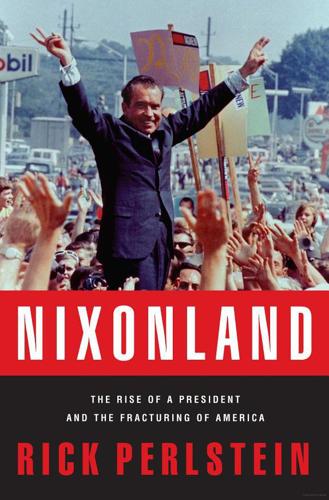
Nixonland: The Rise of a President and the Fracturing of America
by
Rick Perlstein
Published 1 Jan 2008
How was it related to bearded picketers against the Vietnam War, the orgies so vile, or singer John Lennon, who had blasphemously called his rock band “bigger than Jesus” and had to apologize that August to the pope? Was this the whirlwind a civilization reaped once the seeds of moral relativism were sown? And, most of all: what next? When might they move out into the bourgeois utopias: the bungalow belts, the white-picket-fenced suburbs of the Midwest, the white stucco of the Southwest, your own backyard? Were there even enough peace officers in existence to respond? The political season approached. What pundits referred to by the shorthand as “the cities” defined the battlefield. Conservatives looked for ways to blame it all on the liberals.
…
The USSR had softened its hard line, the essay argued; so, with the proper “dynamic detoxification” and “creative counterpressure,” might the Middle Kingdom. The paper was an audition before the Franklins. But Nixon didn’t neglect the Orthogonians. Another article, drafted by Pat Buchanan, came out simultaneously in Reader’s Digest for the masses behind their white picket fences called “What Has Happened to America?” Now that Nixon’s two ’68 opponents, Johnson and Romney, were tangled up in a post-riot battle of legalistic recrimination, the strategic conditions were finally propitious: he introduced himself as a crusader for law and order. “Just three years ago this nation seemed to be completing its greatest decade of racial progress,” the article began.
…
Something, anything, to redeem the dread: if he lost, he was telling his family, it would be because America had proven herself unworthy of his idealism. He might lose. The previous night, on a two-hour Nixon telethon broadcast across the West Coast, a last-ditch attempt to guarantee his home state, he had made a gaffe: he swore. Richard Nixon had been retailing his white-picket-fence piety to the voters since 1946. The only Nixon America’s television audiences knew was the one who, in his third debate with Kennedy in 1960, had solemnly chided Harry Truman for a recent comment that the Republican Party could “go to hell.” “One thing I have noted as I have traveled around the country are the tremendous number of children who come out to see the presidential candidates” is what square old Dick Nixon had said then.

Time Travelers Never Die
by
Jack McDevitt
Published 10 Sep 2009
Eyes wide, she was looking at the sky, at clusters of trees, at a nearby town, at the dirt road underfoot, at a railroad station. “Can’t be happening.” Dave had been there once before, with Shel, when Thomas Edison was supposed to pass through, but they hadn’t done their research thoroughly, and he didn’t show up. It was a pleasant little town with tree-lined streets and white picket fences. Straw hats were in favor for men, and bright ribbons for ladies. Down at the barbershop, the talk would be mostly about the canal they were going to dig through Panama. Birds sang, and in the distance the clean bang of church bells started. He helped her across a set of railroad tracks, and they stopped in front of a general store.

Augmented: Life in the Smart Lane
by
Brett King
Published 5 May 2016
In the future, you’ll be able to take a different car to work every day (autonomous, self-driving vehicles) at a much cheaper rate than you could ever do owning a car of your own, live month by month or week by week in a different room and work in a different workspace every day. Because these experiences are personalised, it will still feel like our own personal style is shining through. Generations Y and Z will trade assets for experiences—the American Dream of the white picket fence will likely give way to a dream of a lifestyle. The biggest entrenched economies today will be those most disrupted by the Augmented Age, largely because of their hesitancy to change from reliance on long held investments in existing technologies. It is why China, which is investing heavily in new technologies and infrastructure, will likely eclipse the United States and Eurozone rapidly as the most valuable economy in the world, why unemployment is likely to grow in the United States as the economy resists infrastructure improvement2 and climate change,3 but why the US stock market will thrive.

Discover Kaua'i Travel Guide
by
Lonely Planet
BUNK HOUSE AT ROSEWOOD KAUA'I Hotel $ Offline map ( 822-5216; www.rosewoodkauai.com; 872 Kamalu Rd; r with shared bathroom $55-65; ) Hostelers will be forever spoiled by these meticulously tidy bunkrooms with private entrances and kitchenettes. Expect a cleaning fee ($25). For a step up, inquire about the picturesque ‘Victorian cottage’ ($145), and ‘thatched cottage’ ($135), which are also on the storybook-pretty property, complete with white picket fence. HALE AWAPUHI Condo $$$ Offline map ( 651-0040; www.haleawapuhi.com; Papaloa Rd; 2br from $299; ) At a near-decadent 2200 sq ft, this plush beachside sunrise- and moonrise-watching unit is an anomaly among the Eastside's modest trends. With a newly designed kitchen, both pink and black marble floors – separated by an intricate wooden spiral staircase – and a plethora of Balinese furnishings throughout, one can't help but appreciate the attention to detail.
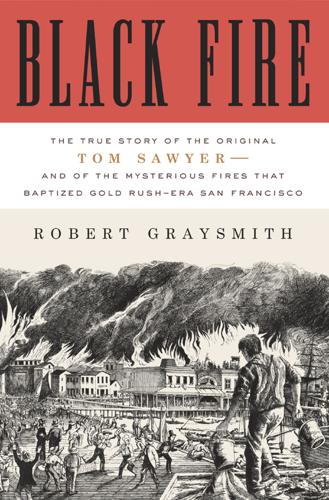
Black Fire: The True Story of the Original Tom Sawyer--And of the Mysterious Fires That Baptized Gold Rush-Era San Francisco
by
Robert Graysmith
Published 30 Oct 2012
As sixty hard-drinking roughhousers, heaving and chanting, rocked to and fro at the handles of the hand-pumper and extinguished two small brush fires, they knew another city-destroying blaze must happen as surely as the sun now rising over the flimsy structures. Charlie Robinson, most famous of all San Francisco torch boys, nearly broke his neck on such a treacherous street. Born in East Monmouth, Maine, he had grown up in a two-story gabled frame house at Number Nine Calhoun Street on Windmill Hill. Perched on a white picket fence across from the house where Hudson, the coffee and tea merchant, ground his spices, Charlie drew fine views of the bay. At age seven, he took painting lessons from the artist Charles C. Nahl. Threats of criminal reprisals forced Charlie’s father, Doc Robinson, a theatrical producer-playwright, to flee San Francisco.

Choked: Life and Breath in the Age of Air Pollution
by
Beth Gardiner
Published 18 Apr 2019
The long rows of trees on either side are bare, and the ground that surrounds them is dry and dusty, like everything here. Later this year, these trees will bear almonds; the Central Valley produces 99 percent of America’s supply of the nut3 and 80 percent of the world’s.4 Soon, I pull up to Tom Frantz’s ranch house, set amid his own almond fields. Roses grow out front, near a pink Adirondack chair and a white picket fence; there’s a parched dirt yard beside the driveway. Frantz grew up in this house, and he has a grizzled, weather-beaten face, the face of a man who’s spent much of his life outdoors, a farmer, and also, until his retirement, a high school math teacher. A mane of tousled gray hair springs from his head, and he wears a frayed tan T-shirt and bushy moustache.

The Ungrateful Refugee: What Immigrants Never Tell You
by
Dina Nayeri
Published 14 Sep 2020
Maybe he hadn’t mourned us yet. We rose early the next morning and lined up to see a parade – it was the Fourth of July, but it seemed that all those families on beach chairs waving American flags and eating watermelon were celebrating our arrival. The parade weaved down residential streets, house after house of actual white picket fences. Some had porch swings, American flags. We were in a film. Jim and Jean were right-wing Evangelical Christians – I marvel now that they agreed to sponsor a family of strangers from a place they knew from a hostage crisis and a war. They spoke to Maman about her plans, making clear that she wouldn’t take advantage of any of the resources available to refugees (‘We’re hardworking Republicans,’ Jim chuckled; he wasn’t joking.)
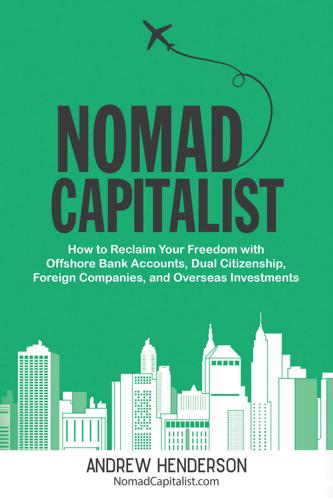
Nomad Capitalist: How to Reclaim Your Freedom With Offshore Bank Accounts, Dual Citizenship, Foreign Companies, and Overseas Investments
by
Andrew Henderson
Published 8 Apr 2018
And because of the rising educational levels around the globe, the quality of work is likely to be very similar. Americans get upset that Mexicans work for much lower wages but ignore the fact that they live ten to a house in order to live on that wage. It is as if they assume that Americans are entitled to a white picket fence forever… because America. I do not say all of this just to bash on the United States – it has its perks – but it is hard to deny the cultural flaws that make it less attractive to do business and hire workers there. The entitlement culture is largely a phenomenon of the West. You can still find people throughout the rest of the world who are hungry to do great quality work, and without demanding holiday pay, maternity leave, contributions to their retirement, overtime, or unionizing.

Don't Call It a Cult: The Shocking Story of Keith Raniere and the Women of NXIVM
by
Sarah Berman
Published 19 Apr 2021
“He saw that I was very uncomfortable,” she testified. “He said, ‘Well, you can choose. Do you want to be intimate and have sex here, or do you want to go on a walk?’ I said I wanted to go on a walk.” Later, according to Nicole, Raniere lectured her about choosing an interesting life over one with a white picket fence. He said he was disappointed that she’d chosen a walk. * * * — AFTER V-WEEK, NICOLE flew back to California to spend time with her family and best friend. Raniere told her to stay in touch during the trip. While out for a hike, Nicole tried to tell her friend about some of her struggles and asked for advice.

Quit Like a Woman: The Radical Choice to Not Drink in a Culture Obsessed With Alcohol
by
Holly Glenn Whitaker
Published 9 Jan 2020
I didn’t want to worry about how my eulogy might read, and I absolutely didn’t want to end up living with my mom through my early twenties because I failed out of community college. I wanted what thirteen-year-old me wanted, which was money, security, status, purity, normalcy, a home with a white picket fence. Only now the home wasn’t really a home so much as it was a high-rise flat in San Francisco because I’d watched Pirates of Silicon Valley starring Noah Wyle and decided that Amanda Woodward wasn’t a high enough aim anymore—I wanted to be more like Steve Jobs. Because I changed so much in those four years, so did my drinking.

Names for the Sea
by
Sarah Moss
Published 27 Apr 2018
Is there anything else, anything a little more – well, mainstream? Well, she says doubtfully, there is the state nursery at Lundaból, but it’s a long way for you to take him every day when you have no car. It is about a mile, a pleasant enough walk through sleeping suburbia. There are gardens consisting of grass, rocks and rowan trees behind white picket fences. You can peer in through 1970s windows to see shiny wooden floors and tidy kitchens, and sometimes a dog barks. The nursery is on a slope from which you can see across the houses and over the top of IKEA to the mountains. There is a metal gate with a latch out of reach of toddlers, and then a tarmac playground with a spider’s-web climbing frame, surely the same model as in my local park in the early 1980s, and certainly of a kind long uprooted in England on health and safety grounds.

America, You Sexy Bitch: A Love Letter to Freedom
by
Meghan McCain
and
Michael Black
Published 31 May 2012
The funny thing about Meghan’s life and my own is that, judging only by lifestyle, we represent the stereotypes of the opposing political party. She’s the young, free-spirited wild child who lives in big cities. I’m the buttoned-up family guy with the wife, two kids, and house with the (literal, in my case) white picket fence. But people aren’t stereotypes, they’re just people. (Actually Omar the Anarchist was a stereotype, but he’s the exception that proves the rule.) Not long after Meghan calls it (and I would like to note for the record that on our final night, she did call it, the wuss), Stephie’s giving me the “see you later” wave from across the yard.

The Millionaire Fastlane: Crack the Code to Wealth and Live Rich for a Lifetime
by
Mj Demarco
Published 8 Nov 2010
Unfortunately, some feel that wealth's toll can be paid by entitlements or certain “prerequisites,” such as: A functional family/good childhood “Hard work” versus “smart work” Educational accomplishments and credentials after your name A stellar business plan Venture capital Being a certain sex, color, or age Wishing, dreaming, and thinking positively Knowing the right people in the right places Attending the right schools Being passionate or "doing what you love" or "what you know" Nothing is further from the truth. The Millionaire Fastlane doesn't care about these things. The Fastlane isn't a straight and smooth tree-lined street with white picket fences and children swinging on tires hanging from oak trees. It's a dark, deserted, unpaved road strewn with potholes that forces change and evolution. If the road trip to wealth were easy, wouldn't everyone be wealthy? Expect a price to be paid. Expect risk and sacrifice. Expect bumps in the road.
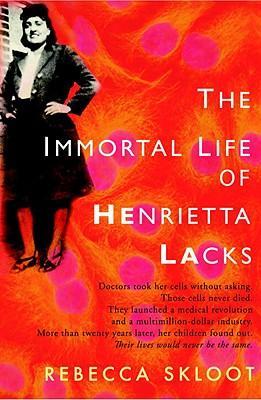
The Immortal Life of Henrietta Lacks
by
Rebecca Skloot
Published 2 Feb 2010
The man never said a word, just waved at me, then slowly pointed behind him, across the tracks. The dividing line between Lacks Town and the rest of Clover was stark. On one side of the two-lane road from downtown, there were vast, well-manicured rolling hills, acres and acres of wide-open property with horses, a small pond, a well-kept house set back from the road, a minivan, and a white picket fence. Directly across the street stood a small one-room shack about seven feet wide and twelve feet long; it was made of unpainted wood, with large gaps between the wallboards where vines and weeds grew. That shack was the beginning of Lacks Town, a single road about a mile long and lined with dozens of houses—some painted bright yellows or greens, others unpainted, half caved-in or nearly burnt-down.

Stuck: How the Privileged and the Propertied Broke the Engine of American Opportunity
by
Yoni Appelbaum
Published 17 Feb 2025
As America’s most prosperous communities developed a new set of legal tools that enabled them to bar the doors to most new arrivals, however, they drove the price of new housing too high for almost anyone to afford, or barred new development entirely. The good news is that addressing this crisis of mobility doesn’t depend on your moving anywhere, if you’d rather stay where you are. It doesn’t depend on your surrendering your single-family home, if you’re lucky enough to have one. You can keep your freshly mowed green lawn and your white picket fence, your driveway and your garden. Solving crises often requires tremendous sacrifice. The simplest solution to this one, by contrast, promises to leave everyone better off. All you have to do is make room for some new friends and neighbors to join you, by allowing them to build new housing on their own property.
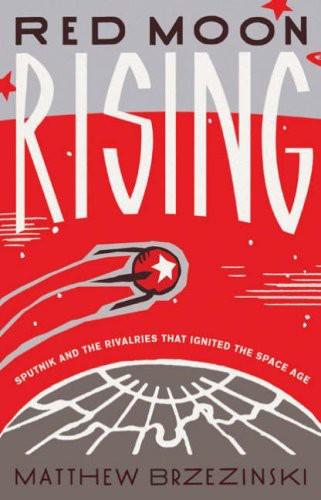
Red Moon Rising
by
Matthew Brzezinski
Published 2 Jan 2007
Compared to Fort Bliss, Huntsville seemed idyllic. The historic hamlet was home to fifteen thousand genteel southerners, and its proud Civil War heritage was etched in the Confederate Monument that crowned the town square. White clapboard church spires dominated the skyline, and the sidewalks were trimmed with white picket fences and immaculately groomed lawns. White was the dominant color in Huntsville, as it was in all of Madison County, Alabama, and throughout the entire Jim Crow South. But the civil rights movement was beginning to take root in 1950, and this worried some of the town’s newest German residents. “We had some concerns here,” Wernher Dahm recalled.

Extreme Economies: Survival, Failure, Future – Lessons From the World’s Limits
by
Richard Davies
Published 4 Sep 2019
For those born in New Orleans, life’s road is often much shorter. After a couple of hours driving north on Highway 61 the swamps and cypress trees of low-lying Louisiana disappear as the road begins to undulate through hills. A turning to the right leads to the pretty town of Jackson with its antique shops, neat lawns and white picket fences. Turning left on to Highway 66 the road swoops and rolls past Baptist churches, plastic letters on their signs spelling out messages – JESUS IS RISEN, and GOD’S NOT DEAD – to the passing traffic. Then the highway stops, abruptly, at a dead end. There is a large wire gate and a security tower.

The Wires of War: Technology and the Global Struggle for Power
by
Jacob Helberg
Published 11 Oct 2021
I took a job at a recruiting firm. I also started dating men for the first time. Growing up, I had never contemplated for a second that I might be gay. My relatively traditional upbringing led me simply to assume that I’d marry a woman, have kids, and settle down somewhere, in a house with the proverbial white picket fence. Now, in a city where I hardly knew anyone—and in socially liberal California—it felt like I had nothing to lose by exploring. I started coming out to myself as much as to others. It was during this period of self-discovery that a friend started telling me about extraordinary things going on just a few hours away in Silicon Valley.

The Job: The Future of Work in the Modern Era
by
Ellen Ruppel Shell
Published 22 Oct 2018
The industry cites several theories, but to get beyond those, I thought it best to put that question to an actual real estate agent. When I called to set our appointment, John Bigelow had just closed one of the biggest deals of his career: a five-bedroom colonial revival tucked behind a white picket fence in a toney neighborhood on the outskirts of Boston. He suggested we meet at the house later that week, and I arrived a few minutes early to encounter him stepping out of a Jaguar, wearing Paul Stewart boots, a Hermès tie, and a fabulous Rolex watch, circa 1977. Noting my quizzical look, he laughed.
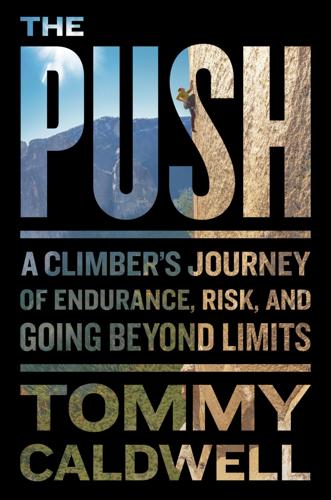
The Push: A Climber's Search for the Path
by
Tommy Caldwell
Published 15 May 2017
I’d watch Beth heave a sigh, as if she was moving heavy furniture. In fact, she wanted to move my parents out of there. My allegiances were torn, but I said, “Okay, I will tell them.” The thought of asking my parents to leave broke my heart. They’d just arrived. We went for a walk, the news trucks now all gone, strolling past white picket fences and flower boxes. The sound of birds chirping filled the air. The streets were wide and in a perfect grid pattern. I could tell they were trying to make no sound with their feet. I took a few deep breaths and started to speak. “I am so sorry, Mom and Dad.” Tears began pouring down my face.
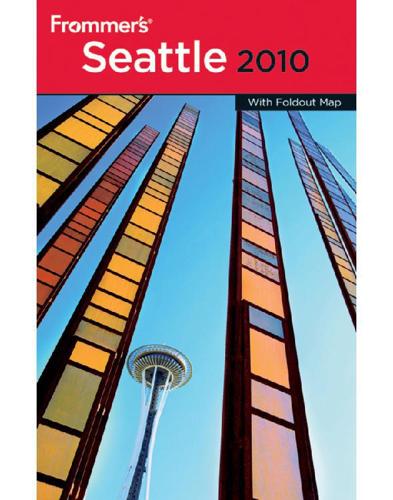
Frommer's Seattle 2010
by
Karl Samson
Published 10 Mar 2010
Luckily, this pigheadedness was defused, and a more serious confrontation was avoided. The English Camp unit of the historical park is set on picturesque Garrison Bay, and, with its huge old shade trees, wide lawns, and white wooden buildings, it’s the epitome of British civility. There’s even a formal garden surrounded by a white picket fence. You can look inside the reconstructed buildings and imagine the days when this was one of the most far-flung corners of the British Empire. If you’re full of energy, hike the 1.25-mile trail to the top of 650-foot Mount Young for a beautiful panorama of the island. An easier 1-mile hike hugs the shoreline out to the end of Bell Point.

City: A Guidebook for the Urban Age
by
P. D. Smith
Published 19 Jun 2012
People were escaping what one newspaper editor described as ‘the moral and physical miasma of the metropolis’.15 Downtown’s loss was suburbia’s gain. For this was the beginning of America’s enduring love affair with suburbia, the dream of a semi-rural bourgeois utopia. For the middle classes this meant a single-family home surrounded by trees and a white picket fence. Suburbia transformed the metropolis in America: as the nineteenth century drew to a close, there was a clear separation of homes and businesses. Soon every American city had two hearts. A British visitor to Chicago described the radical difference between the two: ‘In the one – height, narrowness, noise, monotony, dirt, sordid squalor, pretentiousness; in the other – light, space, moderation, homelikeness.’16 And there was no doubting where most Americans wanted to live.

The Billionaire and the Mechanic: How Larry Ellison and a Car Mechanic Teamed Up to Win Sailing's Greatest Race, the Americas Cup, Twice
by
Julian Guthrie
Published 31 Mar 2014
The driver passed familiar sights in one of Auckland’s oldest suburbs. There at the corner of Scarborough Terrace was St. John the Baptist Catholic Church, opened in 1861 and said to be the oldest parish in Auckland. Next to the small, simple white timber Gothic Revival church was a cemetery plot enclosed by a white picket fence. Norbert walked inside and made the sign of the cross. He had been raised Catholic and the refrains and rituals were a part of him. It was early afternoon and Mass was over. Norbert took his seat in a pew and began to pray. It was his routine when he was in Auckland. “Hey, God,” Norbert began.

Empire of the Scalpel: The History of Surgery
by
Ira Rutkow
Published 8 Mar 2022
When Lister arrived at the Centennial Exhibition in the first days of September, the fair was averaging nearly one hundred thousand visitors a day. It was an extravaganza of over two hundred buildings with tens of thousands of exhibits and the multicolored flags of nations waving everywhere, the grounds surrounded by a three-mile-long white picket fence. Lister was fascinated by the displays and, prior to the start of the medical meeting, spent a day touring the Exhibition’s grounds. At noon on Monday, September 4, Lister led a parade of physicians into the ornate chapel of the University of Pennsylvania. The International Medical Congress was the first of its kind in America; almost five hundred physicians attended.

Land: How the Hunger for Ownership Shaped the Modern World
by
Simon Winchester
Published 19 Jan 2021
The word literally translates to landscape, but in this sense now extends well beyond into more sinister territory. LEVITTOWN. William Levitt of New York built seven massive suburban housing developments—all houses factory-made on production lines, one every eleven minutes—for soldiers returning from the Second World War. Eminently affordable, and with lawns and white picket fences, they seemed to represent an ideal—but Levitt’s company was criticized for refusing to sell to Black people, and the word Levittown soon became a byword for racial prejudice and discrimination. LI. A unit of measurement in China, originally considered the length of extent of an average village, or about one third of a western mile.

Make Your Own Job: How the Entrepreneurial Work Ethic Exhausted America
by
Erik Baker
Published 13 Jan 2025
Florida claimed that creative people had an innate aesthetic attraction to the bohemian communities that could thrive in urban environments even in the direst of circumstances, while they were repelled by the soul-crushing stultification of the suburbs. Members of the creative class wanted “coffee shops, sidewalk cafes, designer merchants and renovated office lofts,” not the manicured lawns and white picket fences of the Organization Man.10 The implication was that such creative-class amenities were indispensable to a city’s “business climate,” at least if it wanted to attract the sort of high-value firms that sought out a creative, entrepreneurial workforce. In the aftermath of The Rise of the Creative Class, a wide array of American cities, often working with Florida’s flourishing consulting practice, aspired to reinvent themselves as “creative cities.”

Titan: The Life of John D. Rockefeller, Sr.
by
Ron Chernow
Published 1 Jan 1997
In the sole extant reference to the matter, he wrote in 1923, “I had just come from New York State and recall my humiliation in being obliged to remain one term in the old Clinton Street School—I had been for several years in the Owego Academy . . . and supposed I should go at once into the High School instead of the Grammar School.”3 For this proud boy, the demotion must have been one of many small but wounding indignities suffered during these anxious years. When John finally entered high school (later called Central High School) in 1854 at the age of fifteen, it was still a modest, one-story affair, shaded by trees and standing behind a clean white picket fence; it would receive a much fancier new building in 1856. Operating on the progressive theory of free education for boys and girls, the school enjoyed a superb reputation. Since it stressed composition, John had to submit essays on four topics to advance to the next grade: “Education,” “Freedom,” “The Character of St.
…
At another point, they met an old man in the roadway whom John so sedulously drained of local lore that the latter finally pleaded with weary resignation, “For God’s sake if you will go with me over to that barn yonder, I will start and tell you everything I ever knew.”72 This was the same monotonously inquisitive young man who was known as “the Sponge” in the Oil Regions. For the first six months of their marriage, John and Laura lived with Eliza at 33 Cheshire Street; then they moved into a dignified, two-story brick house at 29 Cheshire Street. Surrounded by a white picket fence, the house had tall, graceful windows but was disfigured by an ugly portico. Even though Rockefeller now operated and partially owned the largest refinery in Cleveland, he and Laura lived frugally without house servants. Rockefeller always cherished the chaste simplicity of this early period and preserved their first set of dishes, which stirred him to wistful reflections in later years.

Cities Under Siege: The New Military Urbanism
by
Stephen Graham
Published 30 Oct 2009
For militaries to construct physical simulations of places to be targeted and destroyed is nothing new, of course. Nor is the close relation between play, toys, and war, or the mobilization of Hollywood special effects for a war effort. In the Cold War, for example, atomic and thermonuclear bombs were regularly exploded near simulated suburban homes, complete with white picket fences and nuclear families of mannequins placed around the table having a mock meal. Even earlier, during the Second World War, the Dugway Proving Grounds in Utah was the site for the construction of a village of extremely accurate Berlin tenements as well as a cluster of Japanese houses built of wood and rice paper9.
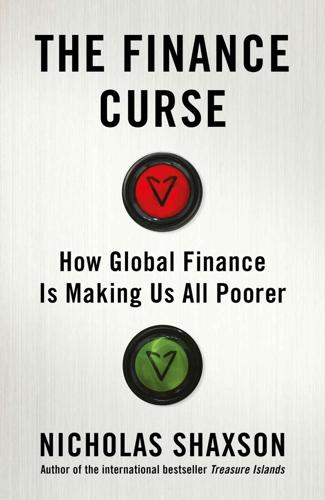
The Finance Curse: How Global Finance Is Making Us All Poorer
by
Nicholas Shaxson
Published 10 Oct 2018
He operates out of an office in a beautiful white-painted former farmhouse with Harrods-green shutters, set among lush clipped lawns, and his job is to persuade businesses to move to the area: first Lenexa, then Johnson County, then Kansas State. He seems to have been effective. Lenexa is a haven of high-end business parks, sprawling low-rise office buildings and industrial centres, nestled among pretty suburban developments chock full of architects, engineers and bioscientists living comfortably behind white picket fences. Employment in Johnson County has been growing by over 4,000 a year through good and bad times, and the unemployment rate, at 3.3 per cent in 2016, has nearly always been lower than the national average.21 When I met him Schreck outlined a number of old-school reasons why so many businesses come to the area.

Fodor's Oregon
by
Fodor's Travel Guides
Published 13 Jun 2023
Get the latest local info at the Camp Sherman Store & Fly Shop, built in 1918. E 25451 S.W. Forest Service Rd. 1419, Bend j 10 miles northwest of Sisters on U.S. 20, 5 miles north on Hwy. 14 P 541/595–6711 w campshermanstore.com. r Restaurants The Cottonwood Café $$ | AMERICAN | Occupying a cute cottage hemmed by a white-picket fence, Sisters’ signature brunch spot serves breakfast all day. The menu features such recognizable dishes as scrambles, hash, and eggs Benedict—all elevated by the chef’s attention to sourcing ingredients from regional growers and bakers. Known for: homey brunch atmosphere; pup-friendly backyard patio with fire pit; standard lunch menu of salads and sandwiches.

The Rough Guide to New Zealand: Travel Guide eBook
by
Rough Guides
Published 1 Jan 2024
Artist Evelyne Siegrist’s architect-designed home is perched high up in five acres of bush north of town, with dizzying gulf views from its three sun-drenched rooms (all with private deck). Not suitable for children. Closed May–Sept. $$$ Coromandel Cottages 1737 Rings Rd; www.corocottages.nz. Beyond the white picket fence are attractive, well-kept wooden cottages (some sleeping up to six people) neatly arranged in tranquil gardens. The motel is 1.5km north of town, and has a big solar-heated swimming pool, a playground and a BBQ area. $$$ Coromandel Top 10 Holiday Park 636 Rings Rd; www.coromandeltop10.co.nz.
…
A free, grassy DOC-run campsite among gold-town remains sheltered by low stone walls and willow, sycamore and apple trees. Facilities are limited to long-drop toilets, and you’ll have to get your water from a stream. $ Settler’s Cottage Motel 22 Hertford St; www.settlerscottagemotel.co.nz. Step back into olden-day Arrowtown in one of these sweet, white-picket-fenced cottages furnished in colonial style. There’s also a guest laundry, a BBQ, and a kids’ playground, and all rooms have a microwave. $$$ Shades of Arrowtown 9 Merioneth St; www.shadesofarrowtown.co.nz. Tastefully decorated modern motel set in leafy surrounds in the heart of town. There’s a good range of units sleeping up to four (most with kitchenette or full kitchen), plus a self-contained cottage that also sleeps four.

Frommer's San Diego 2011
by
Mark Hiss
Published 2 Jan 2007
Sun–Thurs 11:30am–9pm; Fri–Sat 11:30am–10pm (lounge until 1:30am). Free 2-hr. validated parking at Hotel Parisi. Bus: 30. Inexpensive The Cottage BREAKFAST/LIGHT FARE La Jolla’s best—and friendliest— breakfast is served at this turn-of-the-20th-century bungalow. The cottage is light and airy, but most diners opt for tables outside, where a charming white picket fence encloses the trellis-shaded brick patio. Omelets and egg dishes feature Mediterranean, Cal-Latino, and classic American touches. Homemade granola is a favorite, as 124 09_626214-ch06.indd 12409_626214-ch06.indd 124 7/23/10 11:21 PM7/23/10 11:21 PM 7702 Fay Ave. (at Kline St.), La Jolla. & 858/454-8409. www.cottagelajolla.com.

Random Family: Love, Drugs, Trouble, and Coming of Age in the Bro
by
LeBlanc, Adrian Nicole
Published 23 Oct 2012
“There are enough good men in Troy to keep you outta trouble. He’s gotta stay out.” The first thing Coco did when she got back to Corliss Park was drag the lawn chair to the sidewalk and dump it in the garbage. Then she marched straight to Family Dollar. Mercedes wheeled Pearl’s oxygen. Coco bought several packages of decorative white picket-fence pieces, trooped back to Corliss Park, in no mood for nonsense, and shoved them in her lawn. She clamped a bouquet of plastic red and yellow flowers to one of the ankle-high picket-fence posts and waited for Frankie to come home, so she could tell him that he had to go. Frankie didn’t last in the Bronx.

The Unwinding: An Inner History of the New America
by
George Packer
Published 4 Mar 2014
It was like her mother patting her on the back and saying, “It’s going to be all right.” After that she hit the ground running. Miss Hattie said later, “Tammy molded me into the leader that I am.” Across the street from her cut-down-flower garden, in another vacant lot Miss Hattie started the Fairmont Girls and Vicinity Community Garden. She put up a white picket fence, like in the suburbs, and built raised beds out of scavenged wood and chipboard, and compost bins from factory pallets. Georgine’s restaurant loaded thirty pounds of compost in her truck every day, and her doctor gave her horse manure from his farm. Tammy wrote a grant application to the Wean Foundation and Miss Hattie received thirty-seven hundred dollars to get started.

A Generation of Sociopaths: How the Baby Boomers Betrayed America
by
Bruce Cannon Gibney
Published 7 Mar 2017
The subjects of study, the Cleaver family, were studiously unremarkable: two parents (Ward and June), two kids (the Beav and Wally; presumably the statistically required fractional additional child would have been unsettling to display), plunked down in a suburban house enclosed, inevitably, by a white picket fence. Ward was a World War II veteran who had attended a state college, presumably on the GI Bill, and worked at a trust company; June ran the house. The Cleaver children were both Boomers, notionally born in 1944 and 1950, and raised in ways that would have been instantly familiar to their peers on the other side of the set—and alien to their grandparents.
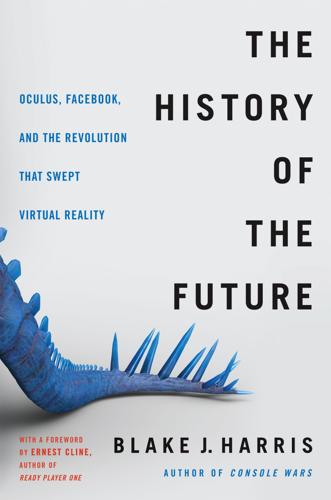
The History of the Future: Oculus, Facebook, and the Revolution That Swept Virtual Reality
by
Blake J. Harris
Published 19 Feb 2019
“I am willing to admit,” Luckey had told her, “that you look slightly better than I do.” Edelmann smiled and as fans snapped photos of her and Luckey—both then, and throughout the trip—she was reminded of something she had said to a friend six months prior: “I think I would have done just fine with an ordinary life: the kids, the mortgage, the white picket fence—I would have been fine with that. But because I’m able to do cool shit, I feel like I have to. For all the people who can’t.” Luckey and Edelmann’s matching outfits were apparently such a hit that it was covered by tech journalists back in the US. Though Luckey appreciated that these reporters found his love of cosplay to be newsworthy, he didn’t much appreciate that just about everyone had still-uncorrected stories about him and Nimble America; and that, of course, those inaccurate stories got linked back to in these new ones.

Fodor's California 2014
by
Fodor's
Published 5 Nov 2013
B&B/INN | One of Placerville’s oldest homes has been transformed into a lovely and relaxing oasis. The main house, cottages, and gardens are filled with paintings and sculptures. Privacy is treasured here. A suite with a sitting room and stained-glass windows occupies the main house’s top floor. One cottage has a little white-picket fence around its own mini-garden; another has a two-person shower. Pros: quiet setting; short walk to downtown; attentive hosts; great breakfasts. Cons: B&B environment not for everyone. | Rooms from: $135 | 2934 Bedford Ave. | 95667 | 530/626–4420 | www.theseasons.net | 1 room, 2 suites, 1 cottage | Breakfast.
…
. | 5350 Moaning Cave Rd., off Parrots Ferry Rd., about 2 miles south of Vallecito | 95251 | 209/736–2708 | www.caverntours.com | $14.95 | May–Oct., daily 9–6; Nov.–Apr., weekdays 10–5, weekends 9–5; hrs can vary, call to confirm. Murphys 10 miles northeast of Angels Camp. Murphys is the Gold Country’s most compact, orderly town, with enough shops and restaurants to keep families busy for at least a half-day. A well-preserved town of white-picket fences, Victorian houses, and interesting shops, it exhibits an upscale vibe. Horatio Alger and Ulysses S. Grant came through here, staying at what’s now called the Murphys Historic Hotel & Lodge when they, along with many other 19th-century tourists, came to investigate the giant sequoia groves in nearby Calaveras Big Trees State Park.

Sweden
by
Becky Ohlsen
Published 19 Jun 2009
B&B rooms are individually decorated so it’s hard to say what you’ll get, but the decor is genteel, and there are hostel beds too. Lunch is also served (Skr70, noon to 3pm). Hotell Örnen (146 64; hotell-ornen@telia.com; Östmarksvägen 4; s/d Skr740/890, 1-/2-/3-/4-bed apt Skr890/1100/1310/1520) Cosy Örnen is a pretty lemon-coloured place set behind a white picket fence smack-bang in the town centre. Bright white Swedish-style rooms practically vibrate with wholesomeness and folky charm. There are also similar flatlets with private kitchens. Heidruns Bok- & Bildcafé (421 26; www.heidruns.se; Fensbol 39; fika from Skr28; noon-5pm mid-Jun–Aug) In summer there’s live music, poetry and other entertainment at this charming cafe, run by local poet Bengt Berg; Sundays are the big day for entertainment.
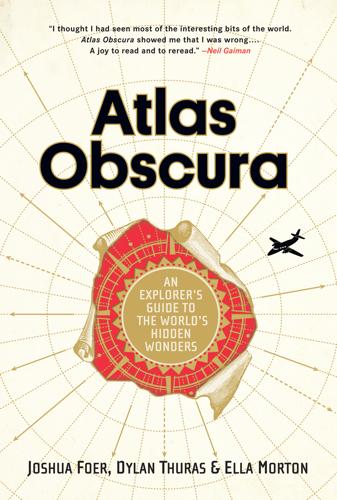
Atlas Obscura: An Explorer's Guide to the World's Hidden Wonders
by
Joshua Foer
,
Dylan Thuras
and
Ella Morton
Published 19 Sep 2016
Tour buses depart daily from the São Luís Bus Terminal. 2.485938 43.128407 In a park without greenery, lagoons and sand dunes sit side by side. Fordlândia SANTARÉM, PARÁ Traveling through thick Brazilian jungle up the Tapajós River, one arrives at a shockingly out-of-place tableau. Amid the monkeys and macaws stand the overgrown ruins of an abandoned American suburb, complete with houses surrounded by white picket fences, fire hydrants, and a golf course. It’s Pleasantville, dropped in the middle of the rain forest. Industrialist Henry Ford created his slice of Americana in the Amazon in the late 1920s. Troubled by the high price of rubber, Ford decided to build his own rubber plantation. He bought over six million acres of Brazilian land and shipped in employees from Michigan to manage the model town.
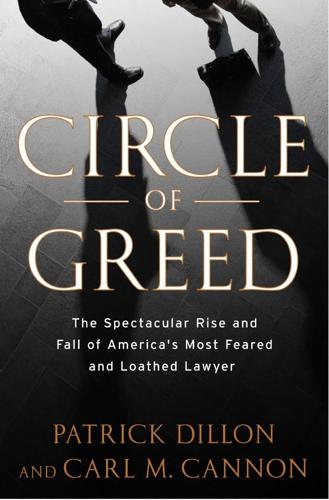
Circle of Greed: The Spectacular Rise and Fall of the Lawyer Who Brought Corporate America to Its Knees
by
Patrick Dillon
and
Carl M. Cannon
Published 2 Mar 2010
He added, not quite as an afterthought, that like Weiss, Cooperman was an art collector. That addendum shed light on an alternative. Weiss flew to Los Angeles, where Cooperman met him and drove him to his Brentwood home, a relatively unimposing, two-story Cape Cod style, with a large porch, white picket fence, and tidy garden. Inside Cooperman showed off his collection of Monets and Picassos. The notoriously poker-faced Weiss could barely restrain himself as he admired what he saw on Cooperman’s walls, especially Picasso’s Nude Before a Mirror. “Henry Ford once owned this piece,” Cooperman boasted.

Sweden Travel Guide
by
Lonely Planet
Hostel breakfast is 65kr extra. There's also a guest kitchen. Family-size groups can rent a self-catering apartment (1200kr, sleeps up to six). Hotell ÖrnenHOTEL€€ ( GOOGLE MAP ; %0560-146 64; www.hotellornen.se; Östmarksvägen 4; s/d from 895/1095kr; pnW) Cosy Örnen is a pretty lemon-coloured place set behind a white picket fence in the town centre. Cheerful, homey Swedish-style rooms practically vibrate with wholesomeness and folky charm. WienerkonditorietCAFE€ ( GOOGLE MAP ; %0560-101 39; www.nyawienerkonditoriet.com; Järnvägsgatan 6; pastries from 20kr; h8am-6pm Mon-Fri, 9am-4pm Sat, 11am-4pm Sun) This homey cafe on the main drag serving hot coffee and home-baked cakes and pastries feels like an auntie’s living room, complete with family portraits on the walls. 8Information Torsby Turistbyrå ( GOOGLE MAP ; %0560-160 50; www.visittorsby.se; Kyrkogatan 5; h10am-4pm Mon-Fri) Near the main square. 8Getting There & Away Torsby is 37km north of Sunne on the E45 motorway.

The Rough Guide to Norway
by
Phil Lee
Published 25 Nov 2013
The main building retains many of its original features and also holds an eclectic sample of antiques. The bedrooms, dotted round the compound, are of the same high standard (en suite 450kr extra) – and the old vagabonds’ hut (fantstuggu), built outside the white picket fence that once defined the physical limits of social respectability, contains the cosiest family rooms imaginable. Dinner is served in the restaurant, with mains averaging 260kr, and the complex also includes a café. Located just off the E6 and 500m up the valley from the train station. 1350kr Dovrefjell-Sunndalsfjella Nasjonalpark Running west towards the coast from the railway and the E6, Dovrefjell-Sunndalsfjella Nasjonalpark comprises a great slab of wild wilderness, 1693 square kilometres in extent, its mountains becoming increasingly steep and serrated as they approach the jagged spires backing onto Åndalsnes.

Homeland: The War on Terror in American Life
by
Richard Beck
Published 2 Sep 2024
Troy Brown, a wide receiver for the Patriots, was assigned Teddy Roosevelt: “We admire the man who embodies victorious effort.” These quotations were laid over video clips of Americana. A sepia-toned classroom of children reciting the Pledge of Allegiance gave way to a shot of a cheerful boy delivering the morning paper over a white picket fence. These scenes led into clips of soldiers, pilots, and lumberjacks, which alternated with images of Patriots and Rams finding glory on the field. As the play-by-play announcer Pat Summerall praised “the indelible spirit of Americans everywhere,” the video ended with a shot of a soldier returning home and sweeping his daughter into his arms.
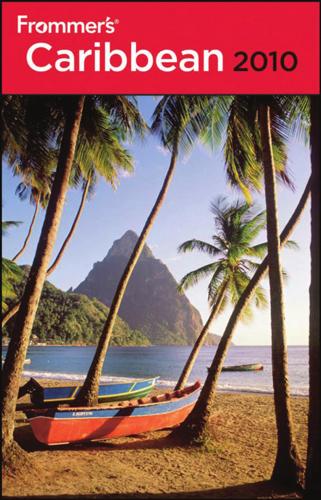
Frommer's Caribbean 2010
by
Christina Paulette Colón
,
Alexis Lipsitz Flippin
,
Darwin Porter
,
Danforth Prince
and
John Marino
Published 2 Jan 1989
Lunch main courses $13–$27; Sun champagne brunch $36; prix-fixe dinner $66. AE, MC, V. Daily 8–10am, noon–3pm, and 6–8:30pm. Expensive 545 Fisherman’s Wharf S eafood Restaur ant and Bar SEAFOOD/CARIBBEAN At the west end of B asseterre Bay Road, the Fisherman’s Wharf is between the sea and the white picket fence of the O cean Terrace I nn. N ear the busy buffet grill, hardworking chefs pr epare fresh seafood. An emplo yee will take y our drink or der, but you personally place your food order at the grill. It’s a bit like eating at picnic tables, but the fresh-fish selection is excellent, caught locally and grilled to order over St.
…
T U R K S & C A I CO S In a new location, Art Provo, Regent Village, Grace Bay Road (& 649/941-4545), has a large selection of paintings by local artists, pottery, baskets, jewelry, and glass. Bamboo Gallery, Caicos Café P laza, Grace Bay Road ( & 649/946-4748), is one of the island ’s leading art galleries, with a large inv entory of Haitian art. Set in a picturesque Blue Hills cottage with a white picket fence, the Blue Hills Artisan Studio, Blue Hills Beach Road (& 649/941-7639 or 649/232-7639; middlecaicos@ tciway.tc), is an outpost of the M iddle Caicos Co-op. More than 60 Caicos Islands artisans ar e r epresented her e, wher e y ou can pur chase fanner-grass baskets and silv ertoppalm crafts, including beribboned straw hats.

Frommer's Oregon
by
Karl Samson
Published 26 Apr 2010
Built in 1861, the McCully House is one of the oldest buildings in Oregon being used as an inn, and with its classic, symmetrical lines and simple pre-Victorian styling, it looks as if it could easily be an 18th-century New England inn. If you like being steeped in local history, this is Jacksonville’s best choice. In the McCully Room, you’ll even find the original black-walnut master-bedroom furnishings. Surrounding the inn and enclosed by a white picket fence is a formal rose garden with an amazing variety of roses. This inn also rents out the “C” Street Cottages and has suites in the nearby Reames House. McCully House Inn & Cottages 13_537718-ch10.indd 303 3/17/10 2:07 PM 304 240 E. California St., Jacksonville, OR 97530. & 800/367-1942 or 541/899-1942.
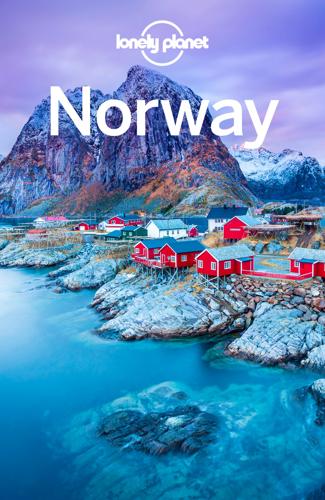
Lonely Planet Norway
by
Lonely Planet
Everything you'd expect in terms of self-catering facilities are provided, as well a small organic juice factory, croquet course, lambs to pet and free bikes to borrow. BestebakkenB&B$$$ ( GOOGLE MAP ; %901 68 449; www.bestebakken.no; Hafslo; s/d/tr 1300/1900/2850kr; p) In the lakeside hamlet of Hafslo, about 7km northwest of Solvorn, this swooningly pretty farmhouse stands in splendid isolation, clad in yellow timber and ringed by a white picket fence. Its 16 rooms are pretty, cosy and chock-full of charm: some have handmade beds, others antique furniture, all squeezed into the house's higgledy-piggledy architecture. A slap-up supper is served nightly. You can also chill in the outside Jacuzzi and organise a spa treatment or massage. oWalaker HotellHOTEL$$$ ( GOOGLE MAP ; %57 68 20 80; www.walaker.com; historic house d 2400-2900kr, annexe d 1900kr; hMay-Sep; iW) This wonderful lemon-yellow hotel is the oldest family-run hotel in Norway.

USA's Best Trips
by
Sara Benson
Published 23 May 2010
Follow the stars east to Skooby’s red-and-white placard reading “gourmet hotdogs.” Why this splash of hotdog pretension? Who knows. The chili-slathered masterpieces at this tiny walk-up don’t need a fancy adjective. Maybe it’s because the fries have aioli sauce. To witness pretension on a grand scale, don’t miss an Ivy drive-by. Tucked behind a white picket fence on uber-trendy N Robertson Blvd, the Ivy still holds court as Queen Bee for see-and-be-seen weekday lunches. Scan the patio for A-listers if camera-toting paparazzi crowd the sidewalk. Neighboring boutiques Kitson, Curve and Lisa Kline sell tiny clothes from hot designers to the young, beautiful and moneyed.

Rough Guide to San Francisco and the Bay Area
by
Nick Edwards
and
Mark Ellwood
Published 2 Jan 2009
Behind the lagoon, you’ll find the nearby Crissy Field Center, Mason and Halleck streets (Wed–Sun 9am–5pm; free; t 415/561-7761, w www.parksconservancy.org), which includes a library, bookstore, and café, as well as offering educational programs. Located near the old stables beneath the Highway 101 flyover, the lovably ramshackle Presidio Pet Cemetery is surrounded by a white picket fence amidst a stand of pines. It’s a slight side trip inland from Crissy Field to reach the small burial site, which contains the graves of numerous Army pets. Tilted headstones mark the final resting places of Frisky, Smoochy, Skippy, and Moocher, among hundreds of others; as you’d expect, dogs and cats were the pets of choice for many Army families, but you’re bound to find the odd iguana or hamster grave site if you hunt thoroughly enough.

Lonely Planet Chile & Easter Island (Travel Guide)
by
Lonely Planet
,
Carolyn McCarthy
and
Kevin Raub
Published 19 Oct 2015
All offer decent food; pick the ambience you like best. Hostal Cafe Suizo HOSTEL $ ( 741-551; Ibáñez 210; s/d CH$16,000/20,000; ) Just 100m west of the Resbaladero, this is a sweet little guesthouse run by an elderly Danish-Swiss couple, with a handful of sprucely kept rooms around a leafy little patio behind a white-picket-fenced facade. Breakfasts are served, from CH$1800. Alfajores Rah SWEETS $ (Balmaceda; alfajores CH$100) Visit the counter of this ramshackle little shop opposite the church for the best alfajores (crackers sandwiching sweetened condensed milk, and rolled in shredded coconut) and local honey. El Gato Rapido CHILEAN $ (Esmeralda 255; mains CH$2500-7500) Simple eatery close to the main plaza, with good-value set lunches (although they tend to sell out early) as well as sandwiches and meaty mains.
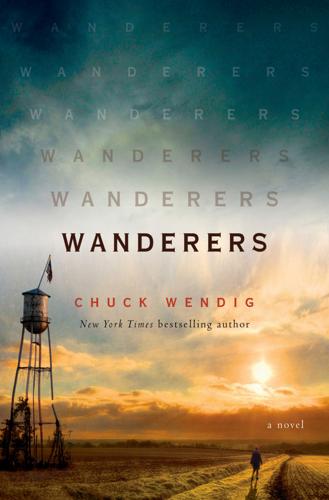
Wanderers: A Novel
by
Chuck Wendig
Published 1 Jul 2019
His wife, standing off to the side of the room—she was watching him, and for a moment their gazes met and held. He smiled at her, happy as a pig in the proverbial, well, you know. She did not return the smile. Then her eyes flicked away to someone near him— A hand clasped his, pulling him nearly off his feet. Ozark Stover. “Preacher,” Stover said, his big bearded grin like a white picket fence half hidden behind a parting thicket. “That was what I hoped to hear. It’s good to hear someone speaking truth about the—what was it? Devil’s Pilgrims. Indeed, indeed.” “Mister Stover, thank you for coming. And for bringing all your people. You sure I didn’t go too far?” he asked. “I usually don’t bring that kind of…zeal to my sermons, to be honest with you.”

The Road Not Taken: Edward Lansdale and the American Tragedy in Vietnam
by
Max Boot
Published 9 Jan 2018
She was more of a 19th rather than 20th Century lady, more comfortable with the social customs and cultural mores of that period. And Ed, while deeply steeped in history, was more of a 20th Century figure who was constantly probing the future. She was looking back, he was looking forward. Helen was family-oriented, would have been at her happiest in a small cottage with a white picket fence and raising children. Ed enjoyed a secluded rendezvous, a mountain hideout or a small hidden beach—but only to rest up and gather his strength for the next adventure.10 Pat—more curious, intellectually sophisticated, opinionated, and outgoing—was instinctively in greater sync with Ed’s personality and interests.

Palo Alto: A History of California, Capitalism, and the World
by
Malcolm Harris
Published 14 Feb 2023
They helped finance and promote reactionary western politicians, who took charge of the national movement in the name of the suburban residents of stolen Mexico. The country’s center of gravity shifted west, and the landowners cashed in. Across the highway from the ghetto, the postwar ownership society took shape: a house with a white picket fence, a couple of white kids, a white wife at home (not working in an orchard or shipyard), a nice green lawn, and two cars—in your colors of choice! Round it out with a job making weapons of mass destruction, a new stereo, and a catalog of forthcoming products sitting circled on the kitchen table.

Before the Storm: Barry Goldwater and the Unmaking of the American Consensus
by
Rick Perlstein
Published 17 Mar 2009
Then he lit up. “How about ‘tommyrot’ ?” And there it was. The most responsible man in the world would remove the albatross of nuclear irresponsibility from the Republican candidate’s weary shoulders by vigorous application of the word “tommyrot.” They set up the shot with the two men leaning over a white picket fence, thick microphone cables protruding from their coat jackets like tails. The cameras rolled. Goldwater said something; Ike’s eyes wandered. Ike began a sentence, then got lost in one of his famous syntactical thickets, never to return (we must, he said at one point, “preserve the outbreak of war”).

Hawaii
by
Jeff Campbell
Published 4 Nov 2009
BUDGET Bunk House at Rosewood Kaua′i (822-5216; www.rosewoodkauai.com; 872 Kamalu Rd; r with shared bathroom $50-60; ) Hostelers will be forever spoiled by these meticulously tidy bunk rooms with private entrances and kitchenettes. Expect a cleaning fee ($25). For a step up, inquire about the picturesque ‘Victorian cottage’ ($145), and ‘thatched cottage’ ($135), which are also on the storybook-pretty property, complete with white picket fence. Lani Keha (822-1605; www.lanikeha.com; 848 Kamalu Rd; s/d from $65/75; ) Solo travelers and sociable types will appreciate the low-key, communal atmosphere in this longtime guesthouse. Nothing fancy, the three rooms feature lauhala-mat flooring, king beds and well-worn but clean furnishings.

Central Europe Travel Guide
by
Lonely Planet
The most famous of the latter are the beautiful Füchtingshof (Glockengiesserstrasse 25; 9am-noon & 3-6pm) and the Glandorps Gang (Glockengiesserstrasse 41-51) , which you can peer into. If you head south along An der Obertrave southwest of the Altstadt, you’ll pass one of Lübeck’s loveliest corners, the Malerwinkel (Painters’ Quarter), where you can take a break on garden benches among blooming flowers, gazing out at the houses and white picket fences across the water. A few steps further, fans of The Tin Drum shouldn’t miss the Günter Grass-Haus ( 122 4192; www.guenter-grass-haus.de; Glockengiesserstrasse 21; adult/concession €5/2.50, ‘Kombi’ card with Buddenbrookhaus €7/4; 10am-5pm Apr-Dec, 11am-5pm Jan-Mar) , which includes a fine collection of manuscripts and sculptures.
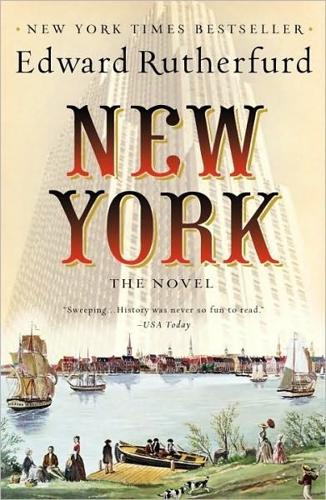
New York
by
Edward Rutherfurd
Published 10 Nov 2009
Arriving at the inn, she didn’t see Gretchen and Theodore, so she supposed Gretchen might have gone up to their room. But the room was empty, so she collected her pencils and went out again. She was just setting off along the path when she saw them. They were a little way off, standing together at the end of the inn’s white picket fence, under the shade of a small tree. They didn’t see her, because they were too deep in their conversation, nor could she hear what they were saying, but you could see at once that they were having a quarrel. Gretchen’s normally placid face was screwed up in fury. Mary had never seen her looking like that before.

Frommer's Hawaii 2009
by
Jeanette Foster
Published 2 Jan 2008
. & 800/833-8849 or 808/775-0275. www.waipiowayside.com. 5 units. $99–$190 double. Rates include full organic tropical continental breakfast w/coffee, fruit (sunrise papayas, mangoes, tangerines), granola, yogurts, and muffins. Extra person $25. MC, V. Located on Hwy. 240, 2 miles from the Honokaa post office; look on the right for a long white picket fence and sign on the ocean side of the road; the 2nd driveway is the parking lot. Amenities: Concierge; TV/VCR/DVD in living room. In room: Dataport. HILO Just outside Hilo is a terrific bed-and-breakfast called Lihi Kai, 30 Kahoa St., Hilo, HI 96720 (& 808/935-7865), a beautifully designed house with mahogany floors, perched on the edge of a cliff with a wide-angle view of Hilo Bay.

Frommer's California 2007
by
Harry Basch
,
Mark Hiss
,
Erika Lenkert
and
Matthew Richard Poole
Published 6 Dec 2006
Mon–Thurs 11:30am–10pm; Fri 11:30am–11pm; Sat 11am–11pm; Sun 11am–10pm. Street parking usually available. Bus: 34. INEXPENSIVE The Cottage BREAKFAST/CALIFORNIA La Jolla’s best, friendliest breakfast is served at this turn-of-the-20th-century bungalow on a sunny village corner. The cottage is light and airy, but most diners opt for tables outside, where a white picket fence encloses the trellis-shaded brick patio. Omelets and egg dishes feature Mediterranean, Asian, or classic American touches; house-made granola is a favorite as well (also packaged and sold to go). The Cottage bakes its own muffins, rolls, and coffee cakes. Breakfast dishes are served all day, but toward lunch the kitchen begins turning out freshly made soups, light meals, and sandwiches.

Germany Travel Guide
by
Lonely Planet
Lübeck Sights 1 Buddenbrookhaus D2 2 Dom D5 3 Füchtingshof E1 Glandorps Gang (see 4) 4 Günter Grass-Haus E1 5 Heiligen-Geist-Hospital E1 Holstentor (see 8) 6 Katharinenkirche E1 7 Marienkirche D2 8 Museum Holstentor C3 9 Petrikirche C3 10 Rathaus D2 11 Salzspeicher C3 12 St Annen Museum E4 13 Theater Figuren Museum C3 14 Willy Brandy House E1 Activities, Courses & Tours 15 Quandt-Linie C3 Sleeping 16 Baltic Hotel A3 17 Hotel an der Marienkirche D2 18 Hotel Jensen Hotel C3 19 Hotel Lindenhof A3 20 Hotel zur Alten Stadtmauer E4 21Klassik Altstadt HotelD1 22 Park Hotel am Lindenplatz A3 23 Rucksackhotel F1 Eating 24 Amaro F1 25 Brauberger C2 Café Niederegger (see 38) 26 Grenadine E3 Kartoffel Keller (see 5) 27 Krützfeld E3 28 Miera E3 29SchiffergesellschaftD1 30 Vai D3 Drinking 31 Café Remise E3 32 Im Alten Zolln E4 33 Jazz-Café D4 34 Theaterquelle D1 Entertainment 35 CafeBar E3 36 Figurentheater C3 37 Musikhochschule Lübeck C3 Shopping 38NiedereggerD3 Sights You can easily spend a day wandering amidst Lübeck’s steeple-punctuated sights. For respite, head south along An der Obertrave southwest of the Altstadt; you’ll pass one of Lübeck’s loveliest corners, the Malerwinkel (Painters’ Quarter), where you can take a break on garden benches among blooming flowers, gazing out at the houses and white-picket fences across the water. In the Middle Ages, Lübeck was home to numerous craftspeople and artisans. Their presence caused demand for housing to outgrow the available space, so tiny single-storey homes were built in courtyards behind existing rows of houses. These were then made accessible via little walkways from the street.

Germany
by
Andrea Schulte-Peevers
Published 17 Oct 2010
The most famous of the latter are the beautiful Füchtingshof (Glockengiesserstrasse 25; 9am-noon & 3-6pm) and the Glandorps Gang (Glockengiesserstrasse 41-51), which you can peer into. If you head south along An der Obertrave southwest of the Altstadt, you’ll pass one of Lübeck’s loveliest corners, the Malerwinkel (Painters’ Quarter), where you can take a break on garden benches among blooming flowers, gazing out at the houses and white picket fences across the water. LITERARY MUSEUMS There must be something in the water in Lübeck, or maybe it’s all that marzipan. The city has connections to two Nobel Prize–winning authors (as well as Nobel Peace Prize–winning former chancellor Willy Brandt). The winner of the 1929 Nobel Prize for Literature, Thomas Mann, was born in Lü-beck in 1875 and his family’s former home is now the Buddenbrookhaus ( 122 4190; www.buddenbrookhaus.de; Mengstrasse 4; adult/concession/child under 18yr €5/2.50/2; 11am-6pm Apr-Dec, 11am-5pm Jan-Mar).

Caribbean Islands
by
Lonely Planet
Try Rush Reef or the reef off Garbanzo Beach for some of the Bahamas’ best surfing. Rent boards for BS$30 per day at Sundried T’s ( 242-366-0616) , located beside the Government Dock. Sleeping & Eating Hope Town Harbour Lodge BOUTIQUE HOTEL $$ ( 242-366-0095; www.hopeownlodge.com; Queen’s Hwy; r & cottages BS$99-325; ) With her white-picket fence and frosting-blue balconies, this hilltop charm-cake will have you at hello, and palm-framed harbor views will keep you from saying goodbye. Rooms in the main house are smallish; bluff-top cottages more spacious. Everyone’s invited to chill by the tiled freshwater pool (nonguests just need to buy some food at the outdoor grill ) or dine at the adjacent white-tablecloth restaurant .
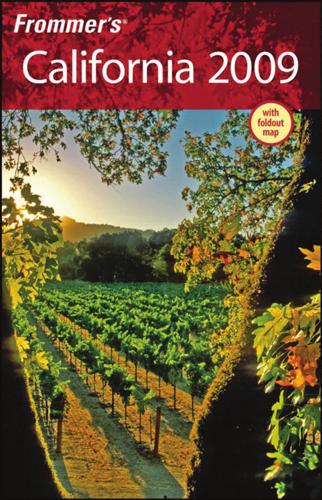
Frommer's California 2009
by
Matthew Poole
,
Harry Basch
,
Mark Hiss
and
Erika Lenkert
Published 2 Jan 2009
Mon–Thurs 11:30am–10pm; Fri 11:30am–11pm; Sat 11am–11pm; Sun 11am–10pm. Street parking usually available. Bus: 30. 17 The Cottage BREAKFAST/LIGHT FARE La Jolla’s best breakfast is served at this turn-of-the-20th-century bungalow on a sunny village corner . The cottage is light and airy, but most diners opt for tables outside, where a charming white picket fence encloses the trellis-shaded brick patio. Omelets and egg dishes feature Mediterranean, Cal-Latino, and classic American touches. Homemade granola is a favorite as well (it’s even packaged and sold to go). The Cottage also bakes its own muffins, rolls, and coffee cakes. Breakfast dishes are ser ved all day , but to ward lunchtime the kitchen begins turning out fr eshly made, healthful soups, light meals, and sandwiches.

Southeast Asia on a Shoestring Travel Guide
by
Lonely Planet
Published 30 May 2012
The graves belong to the chiefs of Sangalla, descendants of the mythical divine being Tamborolangiq, who is believed to have introduced the caste system, death rituals and agricultural techniques into Torajan society. Take a kijang from Makale to Sangalla, get off about 1km after the turn-off to Suaya, and walk a short distance (less than a kilometre) through the rice fields to Tampangallo. Tentena 0458 / POP 12,000 This lakeside town of white picket fences and churches is a good place to break your bus journey north from Rantepao. Surrounded by clove-covered hills, it’s a peaceful and very easy-to-manage town. The price is right, service is good and the rooms are clean at Hotel Victori ( 21392; Jl Diponegoro 18; r from 140,000Rp; ). Only the higher-end rooms have air-con.

The Rough Guide to Australia (Travel Guide eBook)
by
Rough Guides
Published 14 Oct 2023
Smart accommodation options on offer here; they include “Hilltop” hotel rooms with superb harbour views, on the hill above the township (it’s a five-minute walk down, perhaps a bit longer going back up). On the Esplanade, there are “Village” rooms upstairs in Hamer’s Hotel, cottages (motel-style despite the cottage-look exteriors and white picket fences), and smarter (and more expensive) “Waterfront” rooms beside the harbour. $$$ Wheelhouse Apartments 4 Frazer St; http://wheelhouseapartments.com.au. Architect-designed, two-storey apartments on a hilltop, built with local timbers and whose portholes add a maritime air. While attention to detail is lacking and facilities are tired in places, what lets it off the hook is the finest harbour view in Strahan, seen through floor-to-ceiling windows.